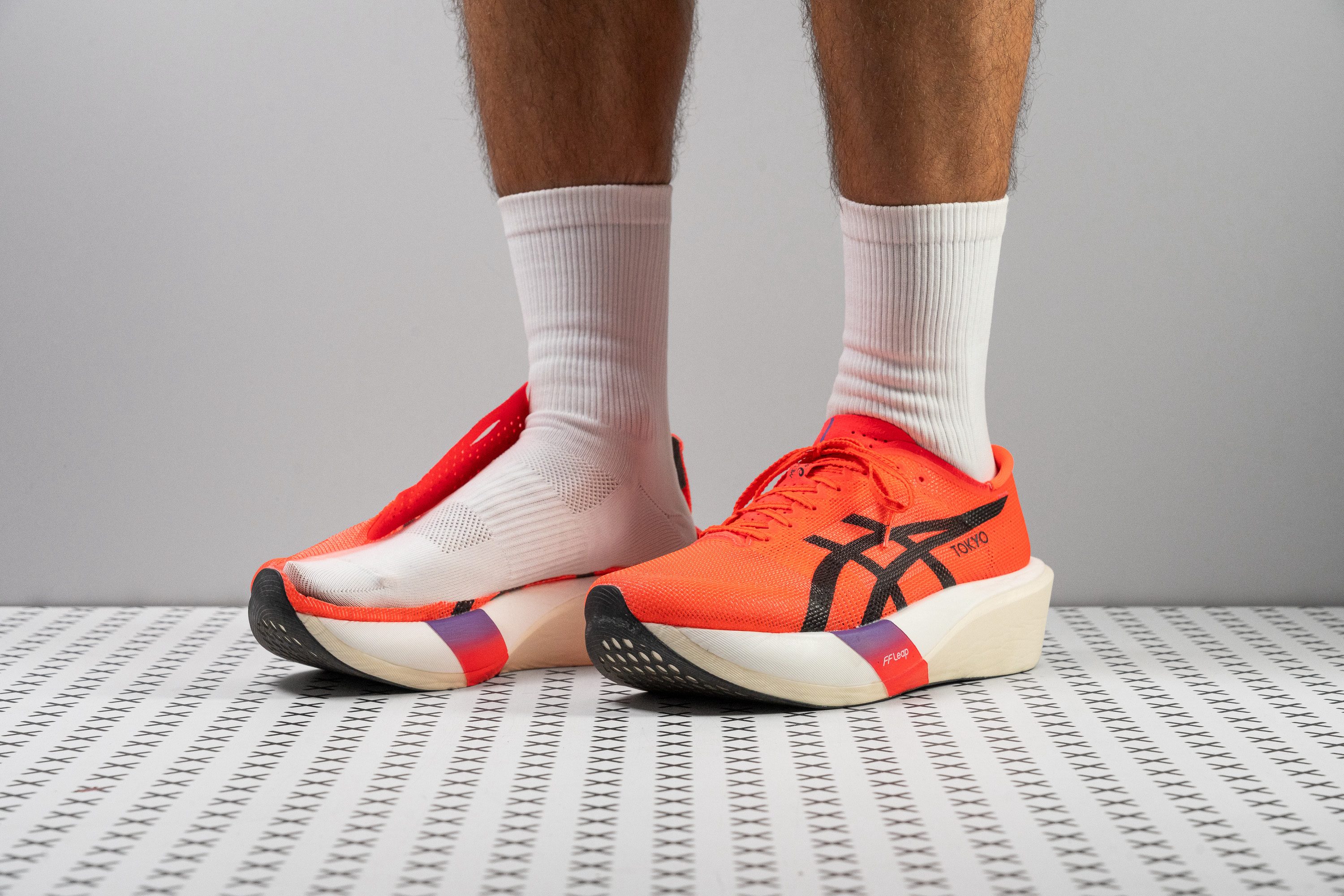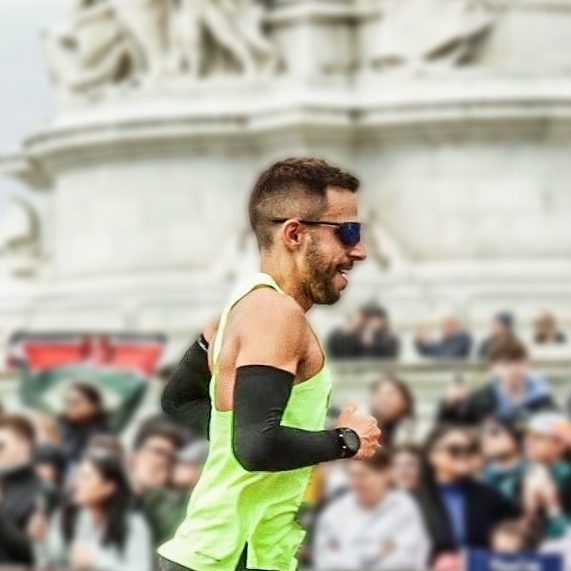Nuestra conclusión
Pros
- Ligeras como una pluma
- Destacan en cualquier distancia, de 5K hasta maratón
- Tracción de élite
- La nueva mediasuela FF Leap es muy reactiva
- Más estables que las Metaspeed Sky Tokyo
- Parte delantera mullida
- Upper fantástico
- Placa curvada que ofrece una pisada clásica
- Mejores que las Metaspeed Edge Paris en todos los sentidos
Contras
- Ahora son más caras
- Ajuste estrecho
- No son estables
Veredicto de los usuarios
Comparativa
Las zapatillas de running más parecidas
+ + Añadir unas zapatillas | |||||
|---|---|---|---|---|---|
| Puntuación global | 88 Notables | 90 Excelentes | 95 Excelentes | 86 Buenas | |
| Precio | 270 € | 250 € | 270 € | 300 € | |
| Pace | Competición | Competición | Competición | Competición | |
| Absorción de impactos | Alta | Alta | Alta | Alta | |
| Retorno de energía | Alto | Alto | Alto | Alto | |
| Tracción | Alta | Alta | Alta | Alta | |
| Arch support | Neutral | Neutral | Neutral | Neutral | |
| Peso laboratorio Peso marca | 5.6 oz / 159g 6 oz / 170g | 6.5 oz / 183g 6.4 oz / 181g | 5.7 oz / 163g 6 oz / 170g | 6.9 oz / 197g 7 oz / 199g | |
| Lightweight | ✓ | ✓ | ✓ | ✓ | |
| Drop laboratorio Drop marca | 6.9 mm 5.0 mm | 6.5 mm 5.0 mm | 6.0 mm 5.0 mm | 7.5 mm 8.0 mm | |
| Técnica de carrera | Medio/antepié | Medio/antepié | Medio/antepié | Medio/antepié | |
| Talla | Tallan bien | Tallan un poquito pequeño | Tallan bien | Media talla más pequeñas | |
| Rigidez de la mediasuela | Blanda | Equilibrada | Blanda | Blanda | |
| Diferencia de la rigidez de la mediasuela en frío | Pequeña | Pequeña | Pequeña | Normal | |
| Durabilidad de la parte delantera | Mala | Buena | Mala | Buena | |
| Durabilidad del acolchado del talón | Alta | Alta | Alta | Alta | |
| Durabilidad de la suela exterior | Buena | Buena | Decente | Buena | |
| Transpirabilidad | Alta | Alta | Alta | Alta | |
| Anchura / ajuste | Estrecha | Estrecha | Estrecha | Media | |
| Anchura de la parte delantera | Media | Media | Estrecha | Media | |
| Flexibilidad | Moderada | Rígida | Rígida | Rígida | |
| Rigidez torsional | Rígidas | Rígidas | Rígidas | Rígidas | |
| Rigidez del contrafuerte del talón | Flexible | Flexible | Flexible | Flexible | |
| Placa | Placa de carbono | Placa de carbono | Placa de carbono | Placa de carbono | |
| Rocker | ✓ | ✓ | ✓ | ✓ | |
| Talón laboratorio Talón marca | 38.9 mm 39.5 mm | 39.1 mm 39.5 mm | 38.7 mm 39.5 mm | 39.9 mm 39.5 mm | |
| Antepié laboratorio Antepié marca | 32.0 mm 34.5 mm | 32.6 mm 34.5 mm | 32.7 mm 34.5 mm | 32.4 mm 31.5 mm | |
| Anchuras disponibles | Estándar | EstándarAncho | EstándarAncho | Estándar | |
| Orthotic friendly | ✓ | ✓ | ✓ | ✓ | |
| Estación | VeranoTodas las estaciones | VeranoTodas las estaciones | VeranoTodas las estaciones | VeranoTodas las estaciones | |
| Removable insole | ✓ | ✓ | ✓ | ✓ | |
| Clasificación | #142 Top 38% | #75 Top 20% | #1 Top 1% | #188 49% inferior | |
| Popularidad | #148 Top 40% | #120 Top 32% | #129 Top 35% | #91 Top 25% |
Quién debería comprárselas
Las ASICS Metaspeed Edge Tokyo simbolizan un firme paso hacia adelante y nos parecen una opción estupenda para:
- Los talonadores a los que la serie Sky les pareció inestable, y que quieren un modelo con unas transiciones más fluidas.
- Los que están buscando unas zapatillas más tradicionales con una placa de carbono curvada y un agarre excelente.
- Los fans de las Vaporfly que quieren un par incluso más ligero, un upper mejor y una absorción de impactos más alta.
- Los corredores neutros que necesitan unas superzapatillas versátiles que sean tanto explosivas para 5K como que tengan la amortiguación suficiente para enfrentarse a un maratón.
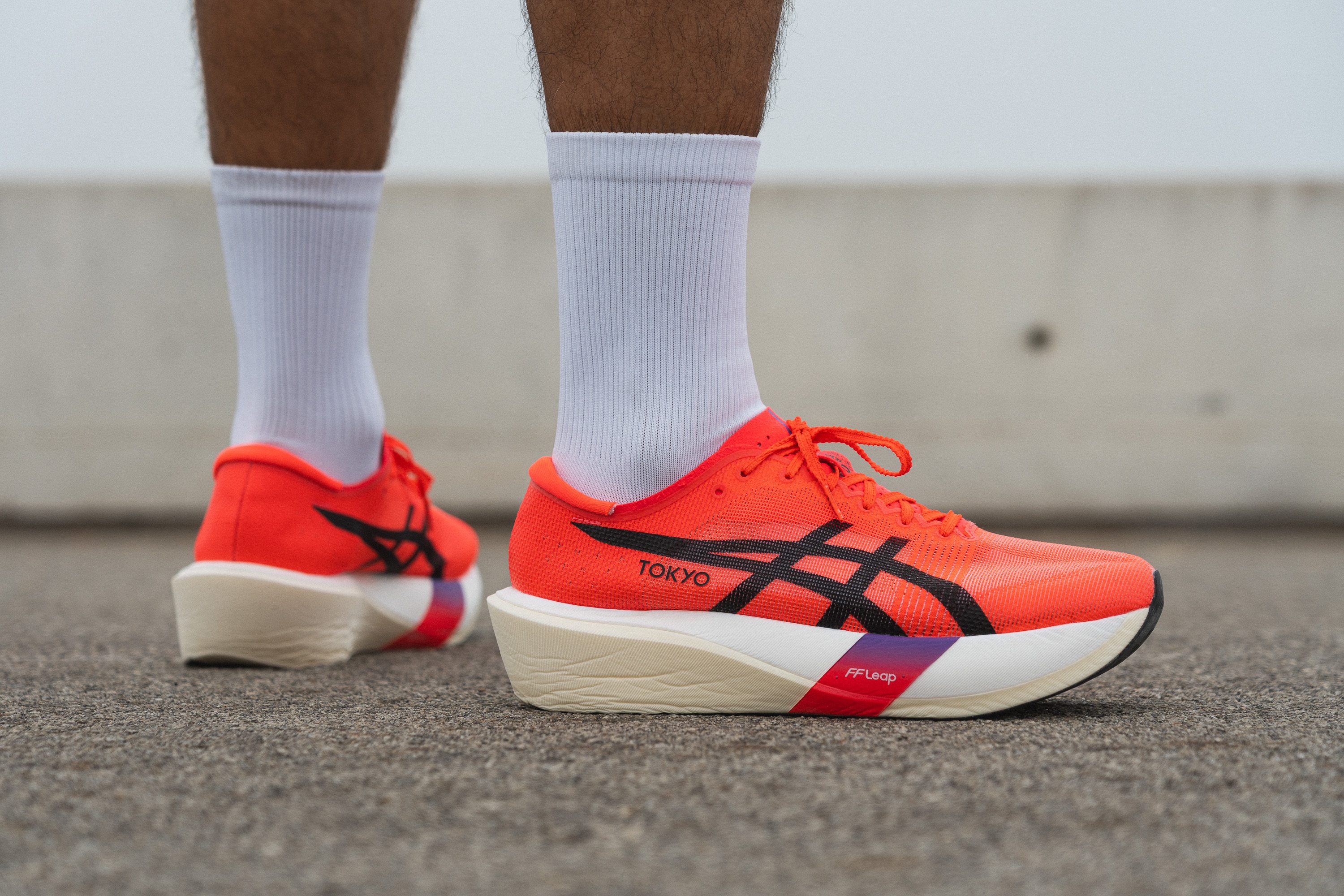
Quién NO debería comprárselas
Las Metaspeed Edge Tokyo no están hechas para todo el mundo, y creemos que a los amantes de los maratones que están buscando control y una pisada fácil a lo mejor les parecen demasiado inestables. A ellos les recomendamos las Adidas Adizero Adios Pro 4 o las Nike Alphafly 3.
Otro de sus problemas es que ahora son más caras. Que sí, que valen una pasta, y las Saucony Endorphin Pro 4 nos parecen una alternativa más asequible que no pierde la esencia de lo que son unas superzapatillas rápidas.
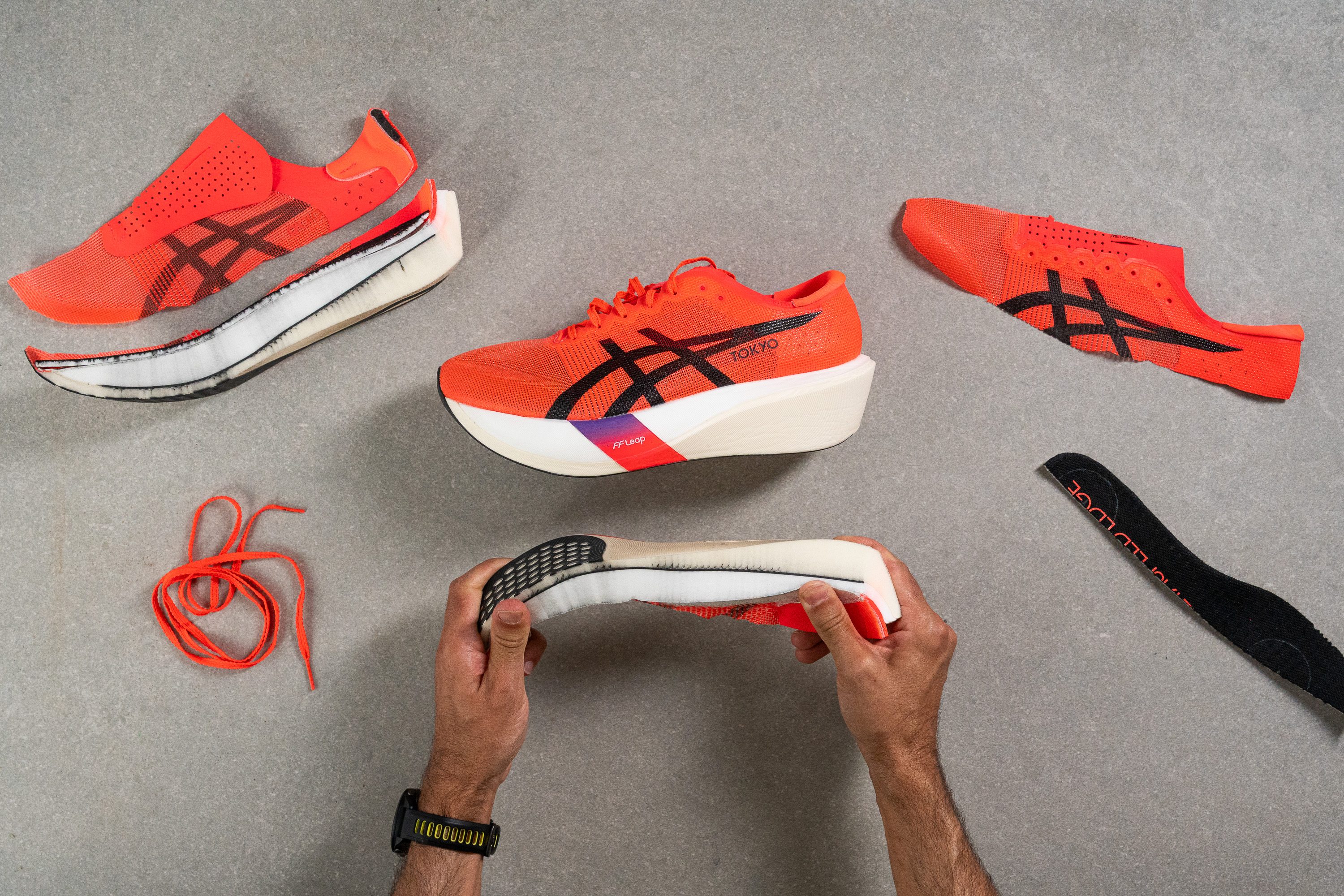
Amortiguación
Shock absorption
Cuando analizamos la amortiguación de las Metaspeed Edge Tokyo aquí en el laboratorio, nos quedamos contentos con su absorción de impactos: 146 SA en el talón y unos impresionantes 132 SA en el antepié.
Estos resultados tan sólidos superan la media de nuestro laboratorio, demostrándonos que estas zapatillas ofrecen mucha protección. Se encargan de darles a los corredores un extra de sujeción no solo para las míticas competiciones, que son un poco más cortas, sino también para los retos de resistencia, ¡maratón por asfalto incluido!
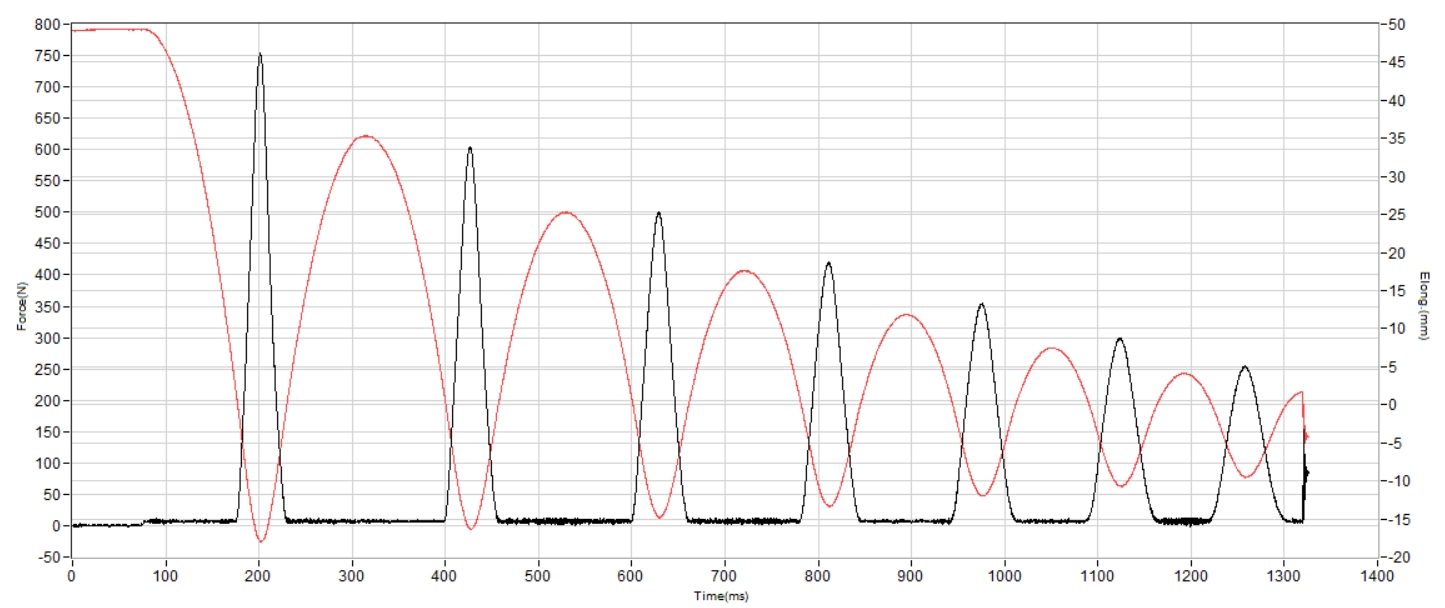
| Metaspeed Edge Tokyo | 146 SA |
| Media | 129 SA |
Energy return
En nuestras pruebas de laboratorio, descubrimos que estas zapatillas ofrecen un retorno de energía del 78,3 % en el talón y del 76,8 % en el antepié. Es un poquito más bajo que el de las Metaspeed Sky Tokyo en el antepié, pero la verdad es que nos tiene todo sentido, ya que las Sky están diseñadas casi exclusivamente para los corredores que aterrizan con el mediopié y el antepié.
Ahora tienen espuma FF Leap, elaborada a partir de A-TPU, y eso es una mejora importante. Aumenta bastante el rebote en comparación con las versiones anteriores de las Metaspeed, haciendo que este modelo esté al mismo nivel que las superzapatillas de élite actuales.
| Metaspeed Edge Tokyo | 78.3% |
| Media | 58.5% |
Altura de la suela en la zona del talón
La World Athletics establece el límite de altura de la suela en el talón en 40 mm, y las Metaspeed Edge Tokyo están muy cerquita con sus 38,9 mm.
Esta cifra coincide con lo que nos esperamos de todas las superzapatillas modernas diseñadas para el maratón, donde una absorción de impactos excelente es imprescindible.
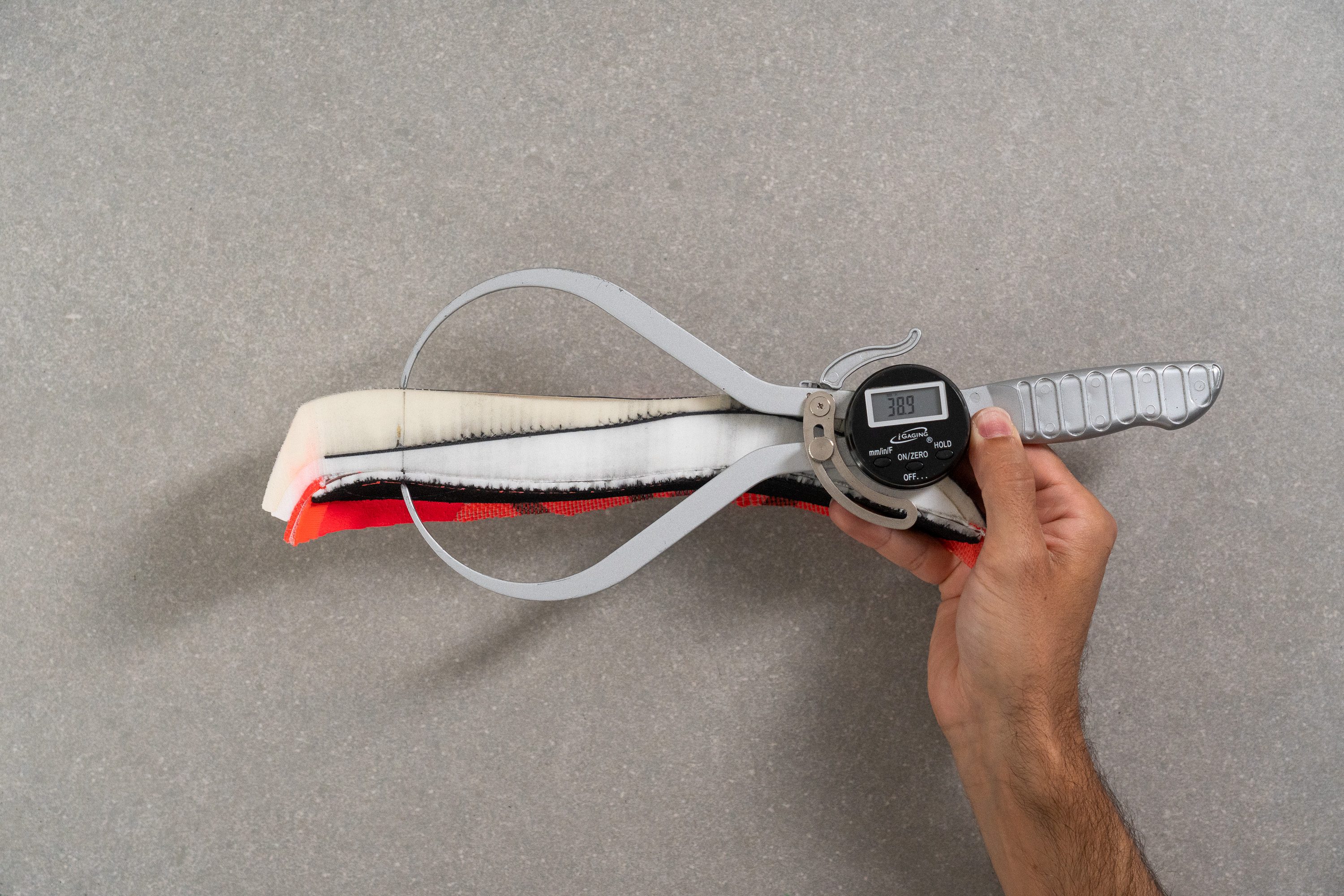
| Metaspeed Edge Tokyo | 38.9 mm |
| Media | 34.8 mm |
Altura de la suela en el antepié
El antepié también supera los 30 mm de altura, que es el umbral que actualmente asociamos con las zapatillas de running maximalistas. De hecho, pocas superzapatillas superan los 32,0 mm hoy en día, así que si la amortiguación en el antepié es importante para ti, las Edge Tokyo te van a gustar.
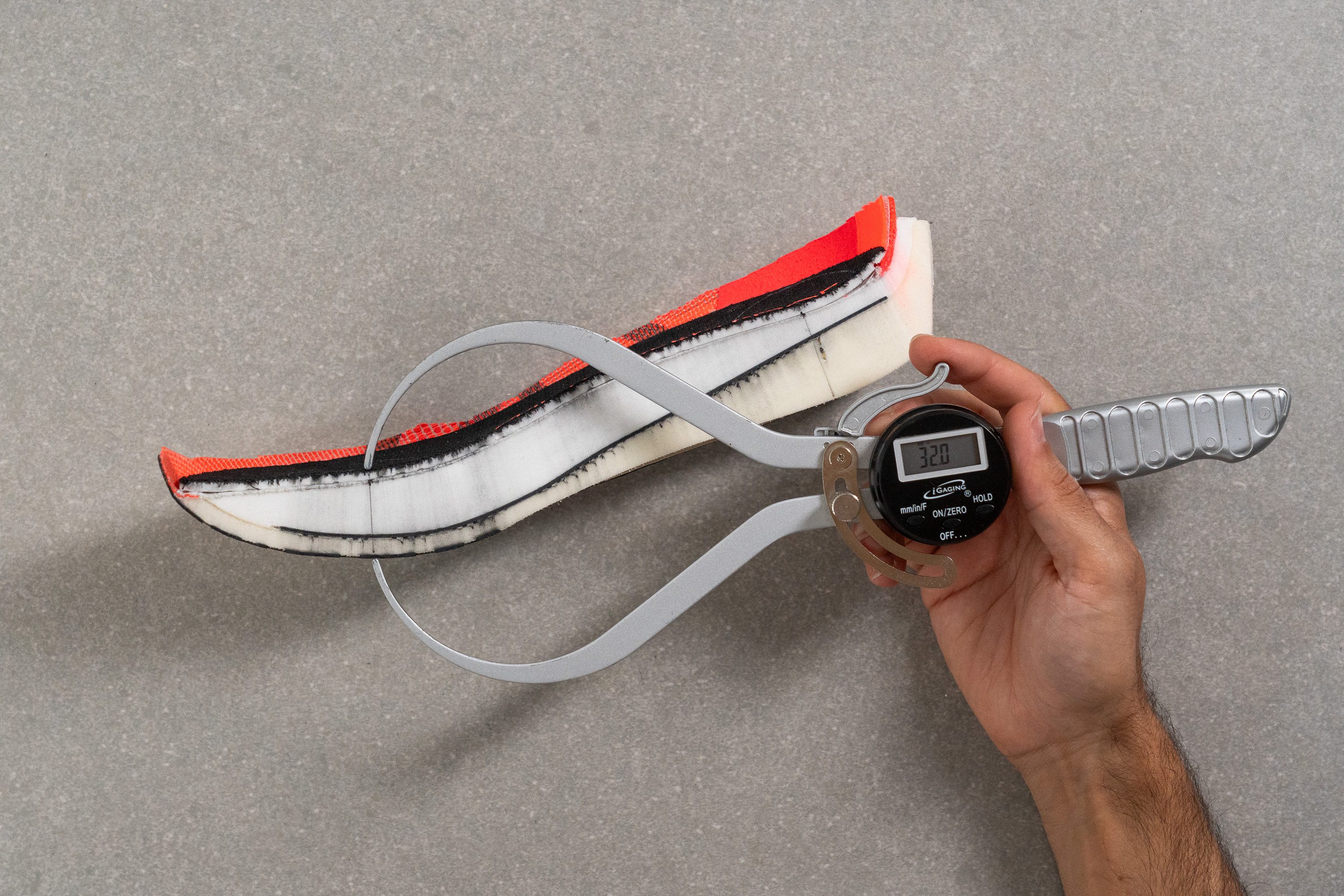
| Metaspeed Edge Tokyo | 32.0 mm |
| Media | 26.2 mm |
Drop
ASICS nos dice que el drop de este modelo es de 5 mm, igual que el de las Sky; pero cuando lo medimos nosotros, nos dio 6,9 mm, que coincide con lo que sentimos cuando corrimos con las Edge.
Estas zapatillas se sienten más como unas Vaporfly 4, ofreciendo esa clásica sensación de superzapatillas con una transición fluida del talón a la punta.
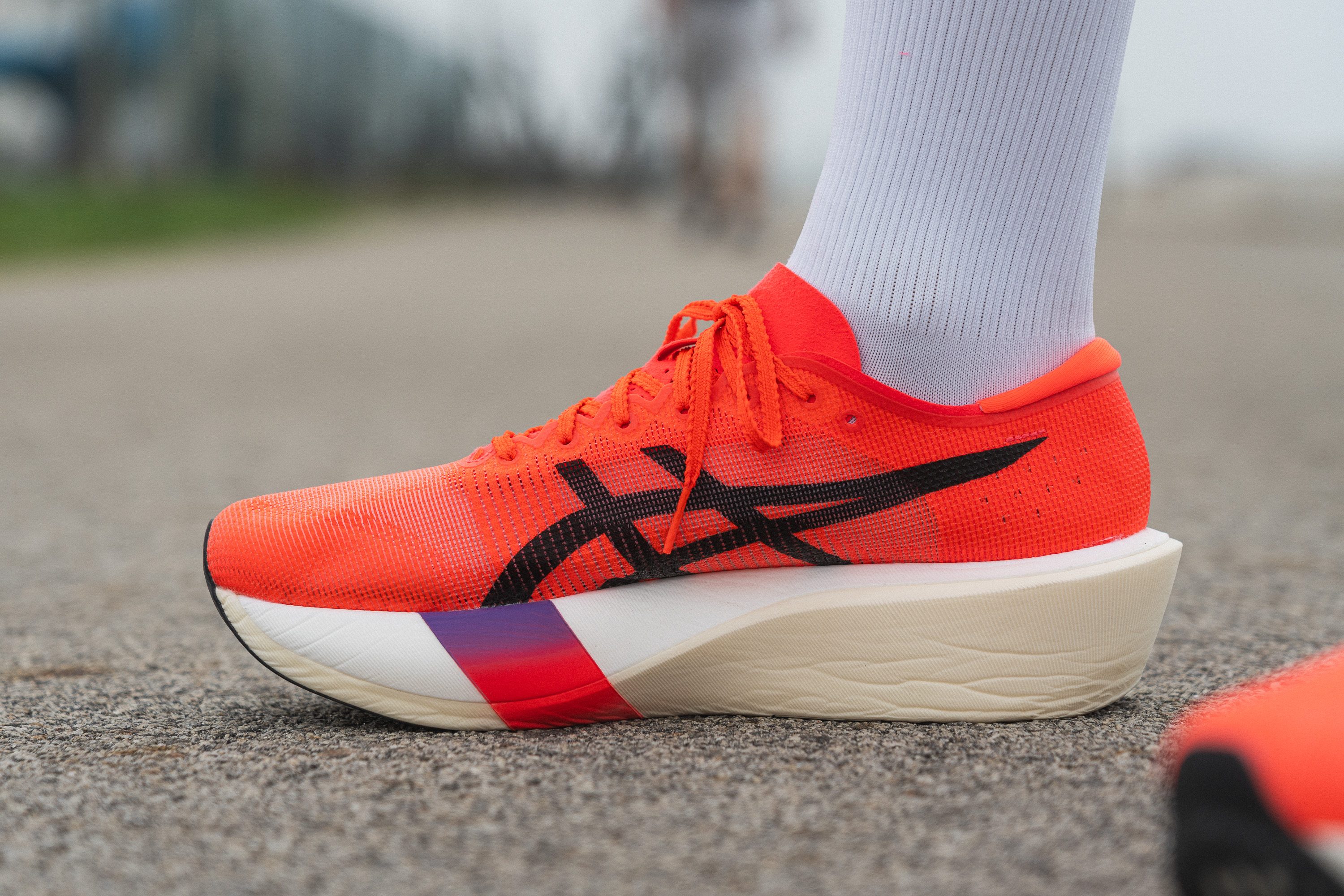
| Metaspeed Edge Tokyo | 6.9 mm |
| Media | 8.6 mm |
Suavidad de la mediasuela
La nueva espuma FF Leap es blandita hasta decir basta con sus 11,5 HA según nuestro durómetro, rompiendo totalmente con la FF Turbo+, que es bastante más rígida. Aunque la Turbo+ también venía cargada de energía, se sentía mucho más firme bajo los pies y menos mullida en general.
En las Metaspeed Edge Tokyo, la FF Leap está encima de la placa para maximizar su presencia en el antepié. Ponerla debajo reduciría la amortiguación en la parte delantera y pondría en riesgo la estabilidad de los talonadores, lo que explica por qué este diseño está del revés si lo comparamos con el de las Sky Tokyo.
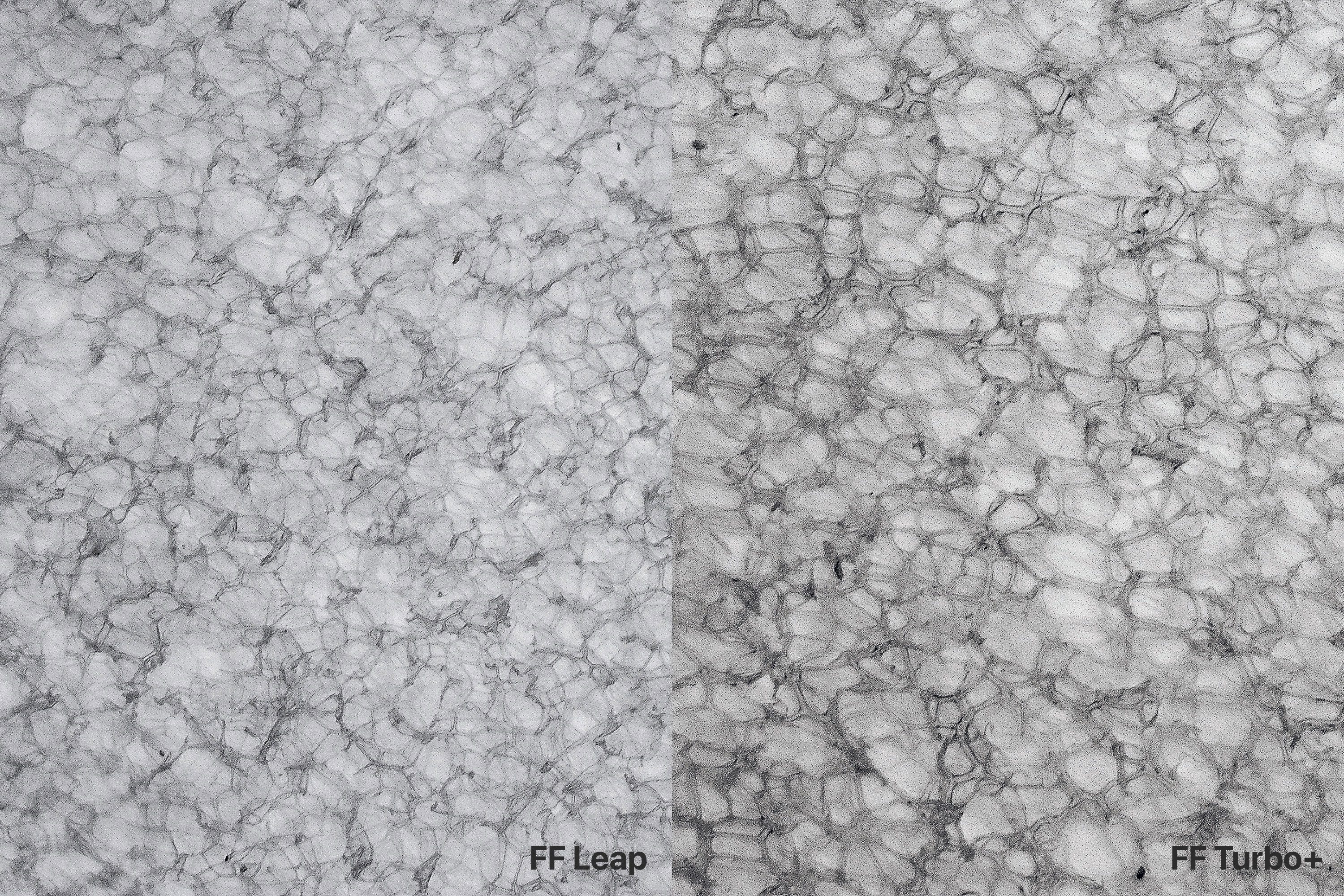
Gracias a nuestro microscopio, pudimos ver que la espuma FF Leap tiene una estructura celular más fina y compacta, lo que explica su carácter suave y mullido. Por otro lado, la FF Turbo+ tiene células más grandes y densas, dejándonos claro que se siente más rígida.
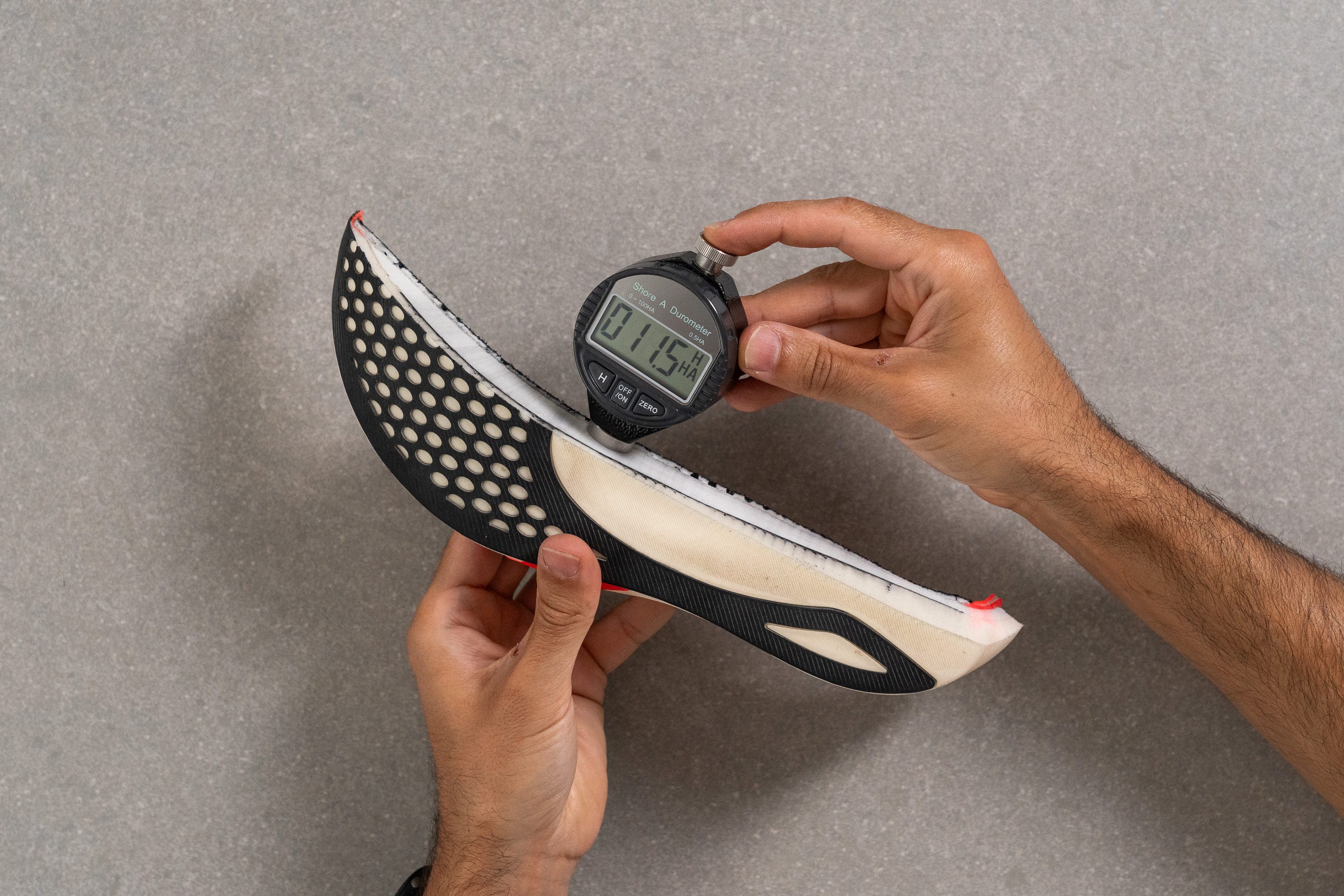
| Metaspeed Edge Tokyo | 11.5 HA |
| Media | 20.4 HA |
Suavidad de la espuma secundaria
Como ya sabes, las Metaspeed Edge Tokyo tienen un diseño de doble espuma. A diferencia de las Sky, donde la FF Leap está debajo de la placa, las Edge colocan este compuesto tan blandito y resistente encima de la misma.
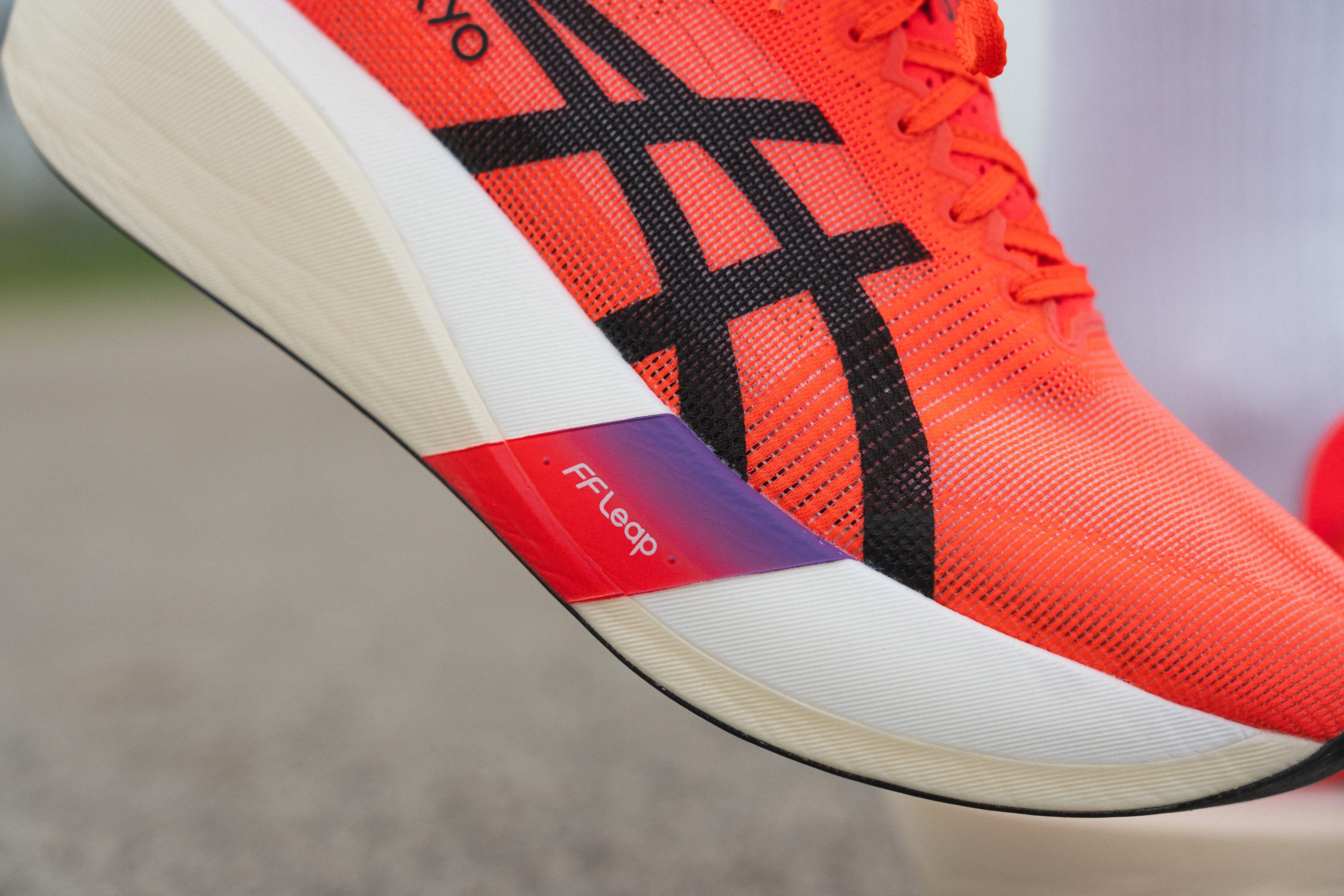
Poner la espuma FF Turbo+, que es más rígida, más cerca del suelo, mejora la estabilidad, compensando lo blandita que se siente la FF Leap. Esto hace que las Edge sean más estables para los talonadores.
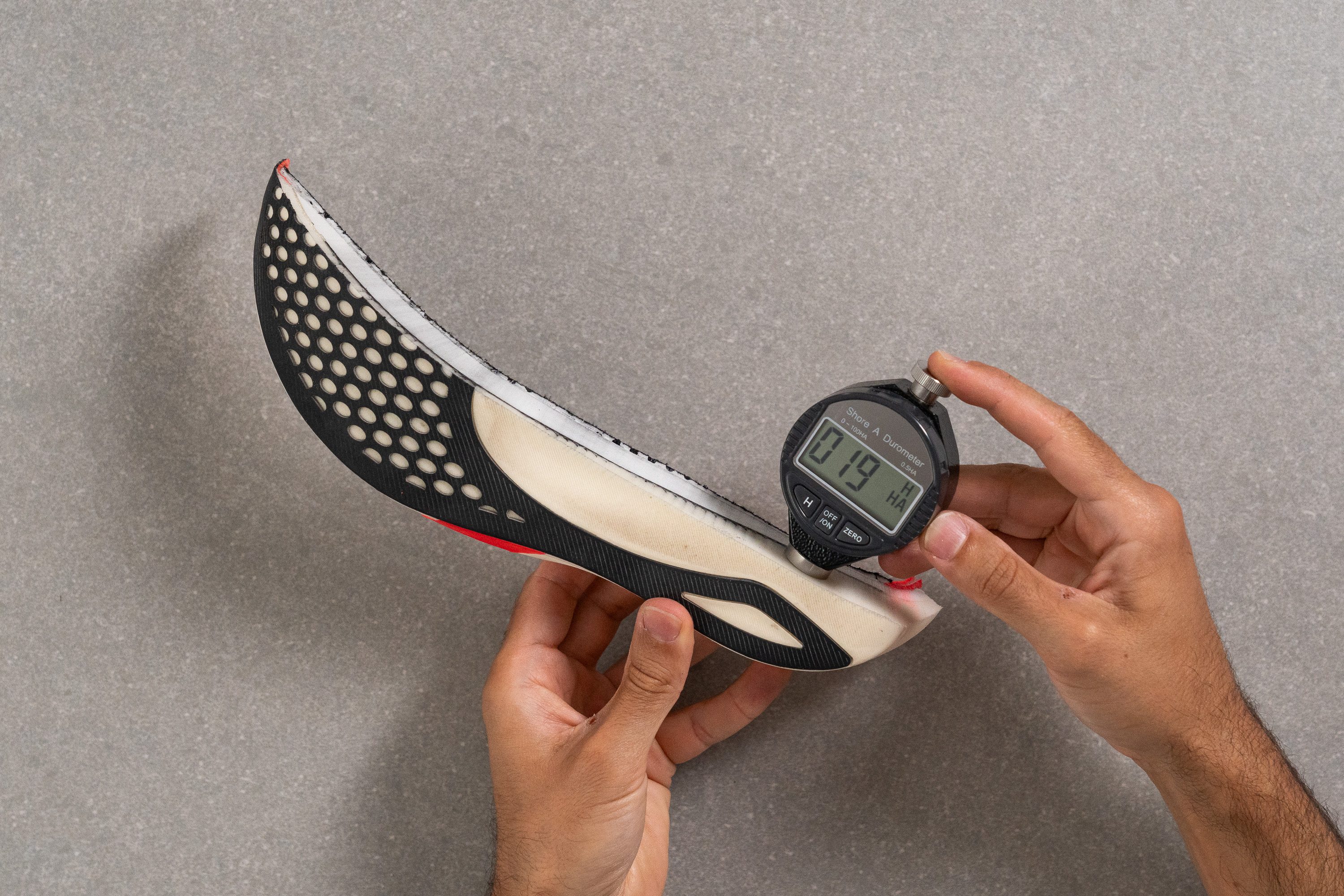
| Metaspeed Edge Tokyo | 19.0 HA |
| Media | 22.7 HA |
Rocker
Descubrimos que el rocker de las Edge se siente moderado en comparación con otras superzapatillas, ya que la curvatura del antepié comienza bastante tarde. La verdad es que se nota bastante la diferencia si las comparamos con competidoras como las Hoka Cielo X1 2.0.
En el talón, la curvatura es muy sutil, y creemos que ASICS podría haberle dado una forma un poco más agresiva en las Edge, parecido a lo que hizo en la serie Paris.
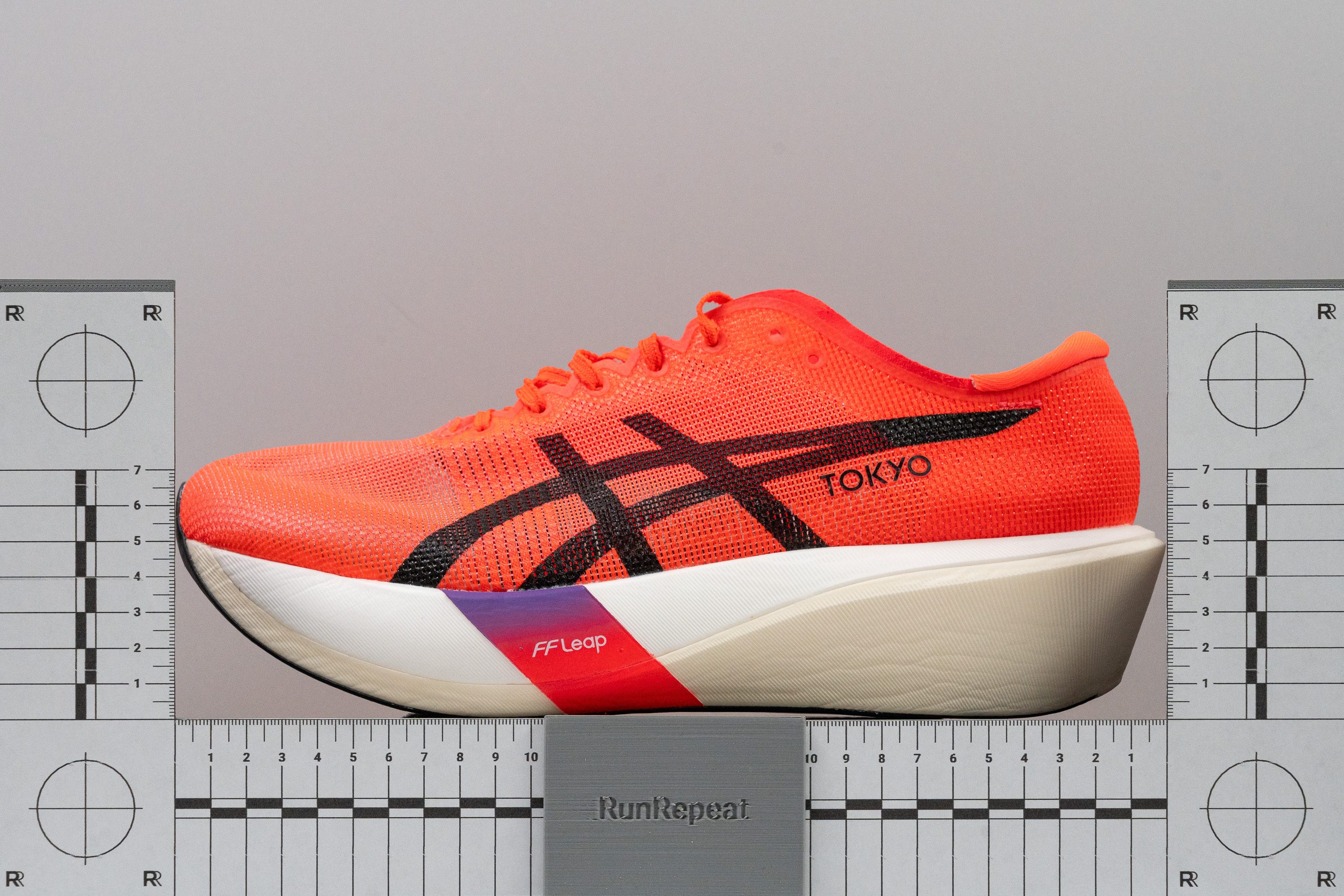
Placa
Aparte de la configuración de la espuma, la mayor diferencia de las Edge en comparación con las Sky es su placa de carbono.
Su diseño se inclina más hacia una disposición clásica con un antepié curvado, aunque es menos pronunciado y tiene menos forma de cuchara que el de otras superzapatillas como las Vaporfly. Su geometría inclinada mejora las transiciones hacia adelante, sobre todo para los talonadores y los corredores de mediopié; y como la espuma FF Leap está encima de la placa, la pisaca se siente reactiva en los despegues.
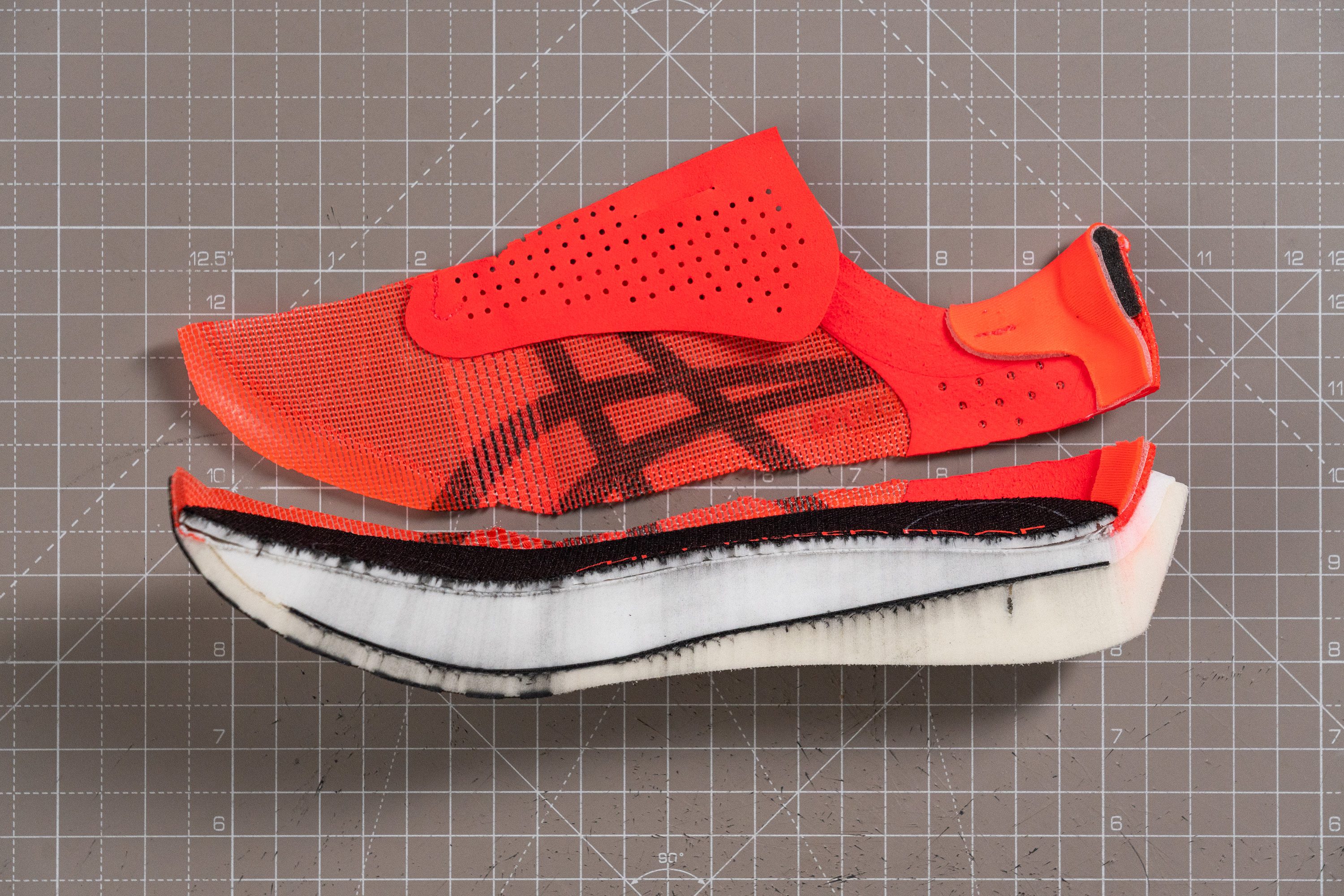
Edge vs. Sky
Cuando ASICS presentó los modelos Sky y Edge, sentimos que daba un atrevido paso hacia adelante al ofrecer dos superzapatillas diseñadas para distintos estilos y técnicas de carrera, en vez de una única opción. Las Sky están pensadas para los corredores de "zancada", mientras que las Edge eran para los que tienen una cadencia más rápida.
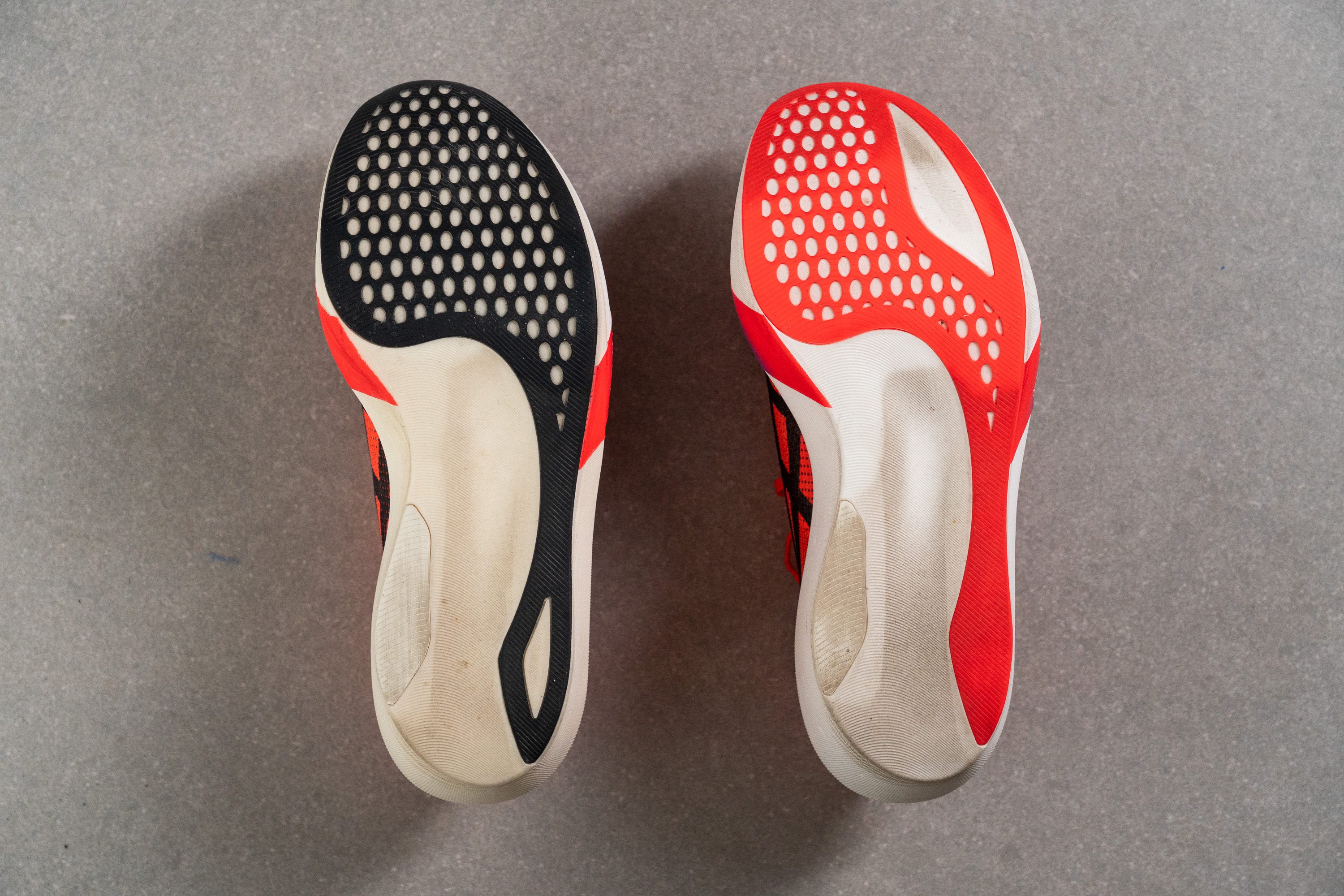
Las suelas de las Edge (negro) y las Sky (rojo) son un poquito distintas
Incluso así, hay varios detalles que se solapan. Algunas Edge se adaptan a los runners de zancada que aterrizan con el talón, mientras que a veces las Sky les iban mejor a los runners de cadencia que aterrizan con el mediopié. La distinción no siempre era clara, pero con esta versión, ASICS al fin ha trazado una línea más definida entre ambas.
Personalmente, nosotros creemos que la forma más sencilla de decidir es la siguiente: los corredores que aterrizan con el talón o a los que les gustan las transiciones fluidas deberían optar por las Edge, mientras que los corredores de metatarsos que quieren sentir que las zapatillas les impulsan después de cada paso, como con unas Alphafly, seguro que se enamoran de las Sky.
Tallaje y ajuste
Talla
Las ASICS Metaspeed Edge Tokyo tallan bien (24 votos).
Anchura / Ajuste
Cuando nos pusimos por primera vez las Metaspeed Sky Paris, dijimos que su ajuste era ceñido, algo así como subirse a un Ferrari. Pues las Edge Tokyo se sienten de una forma muy parecida.
El molde que hicimos de su interior confirmó que tienen una anchura de solo 89,4 mm. Esto hace que se sientan listas para competir, e incluso mejora un poco la estabilidad, pero claramente... no son una buena opción los para corredores con pies anchos.
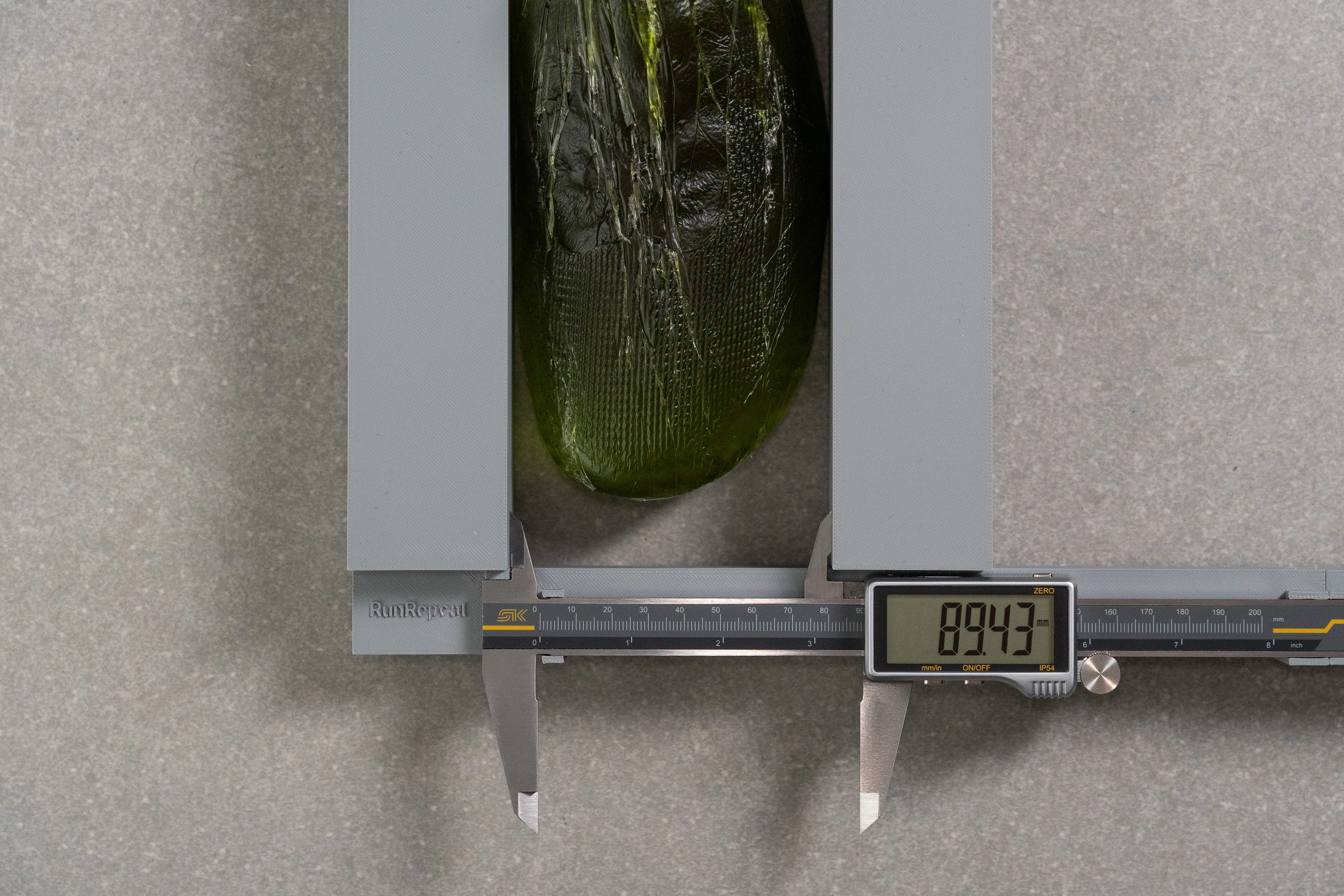
| Metaspeed Edge Tokyo | 89.4 mm |
| Media | 95.1 mm |
Anchura de la parte delantera
Las Edge se diferencian de las Sky en la zona de los dedos, ya que miden 73,0 mm según nuestro calibre. Esto las convierte en una opción un poco más espaciosa, que siempre es de ayuda cuando nos enfrentamos a las distancias más largas.
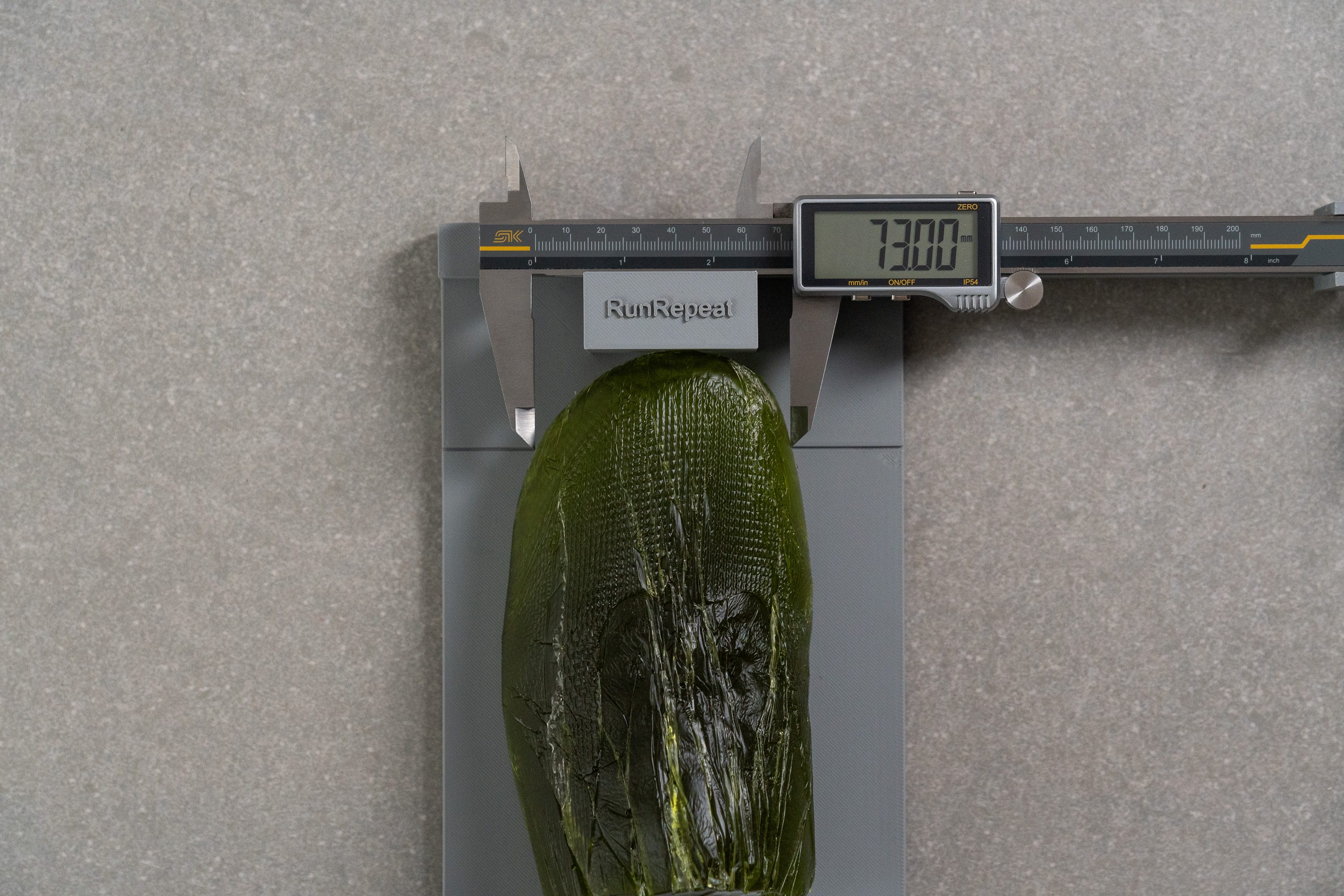
| Metaspeed Edge Tokyo | 73.0 mm |
| Media | 73.2 mm |
Altura de la parte delantera
La parte delantera tiene altura de sobra con sus 28,1 mm.
Este espacio libre, parecido al de las zapatillas de entrenamiento diario, hizo que no tuviésemos que lidiar con rozaduras, a la vez que refleja la reciente tendencia de ASICS de diseñar zapatillas con un espacio vertical generoso. Así los dedos no tienen que pasarlo mal porque los estruja el upper, y las Noosa Tri 16 lo tienen claro.
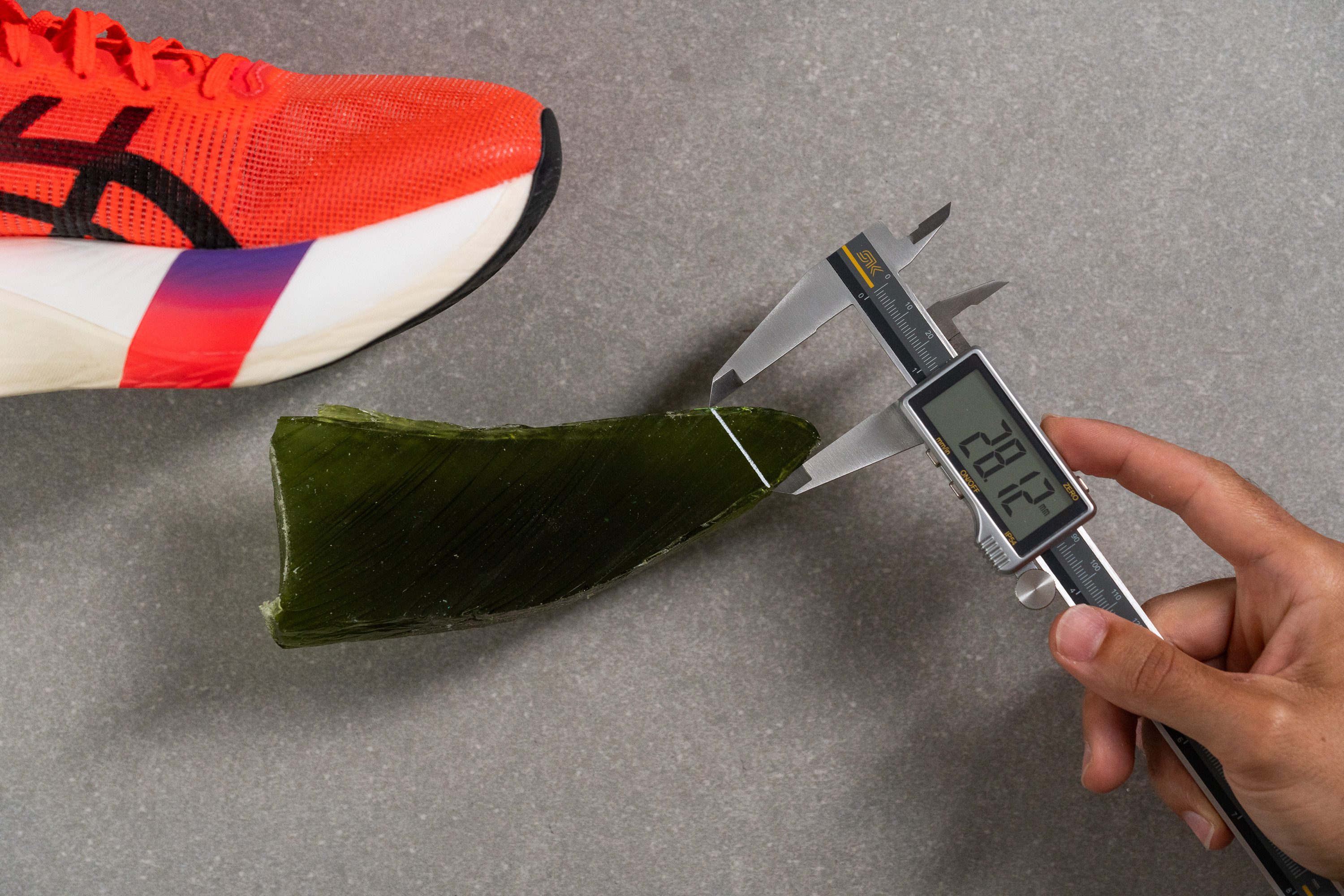
| Metaspeed Edge Tokyo | 28.1 mm |
| Media | 27.1 mm |
Tracción / Agarre
Traction test
En las Metaspeed Edge Tokyo, ASICS mantuvo su compuesto ASICSGRIP. En comparación con las Sky, amplió la cobertura de caucho a lo largo del lateral del antepié, un detalle que ya habíamos mencionado antes en esta review.
El resultado es una suela exterior que ofrece una tracción excepcional tanto en carreteras secas como mojadas. En nuestras pruebas, se llevó un impresionante 0,74 (muy por encima del 0,66 de las Sky), lo que hace que estén entre las pocas superzapatillas con una suela exterior de élite.
| Metaspeed Edge Tokyo | 0.74 |
| Media | 0.48 |
Diseño de la suela exterior
Descubrimos que la suela exterior de las Metaspeed Edge Tokyo combina una fina capa de caucho ASICSGRIP con espuma expuesta para reducir el peso. La parte delantera tiene un amplio panel de caucho negro con recortes ovalados colocados en forma de cuadrícula, y el lateral tiene más caucho que las Sky, que es algo clave para conseguir ese mejor agarre.
En el talón, la mayor parte de la espuma está expuesta, excepto por una pequeña franja de caucho blanco en la cara interna (que actúa como refuerzo) y caucho negro que se extiende hacia el mediopié y el talón por la cara externa.
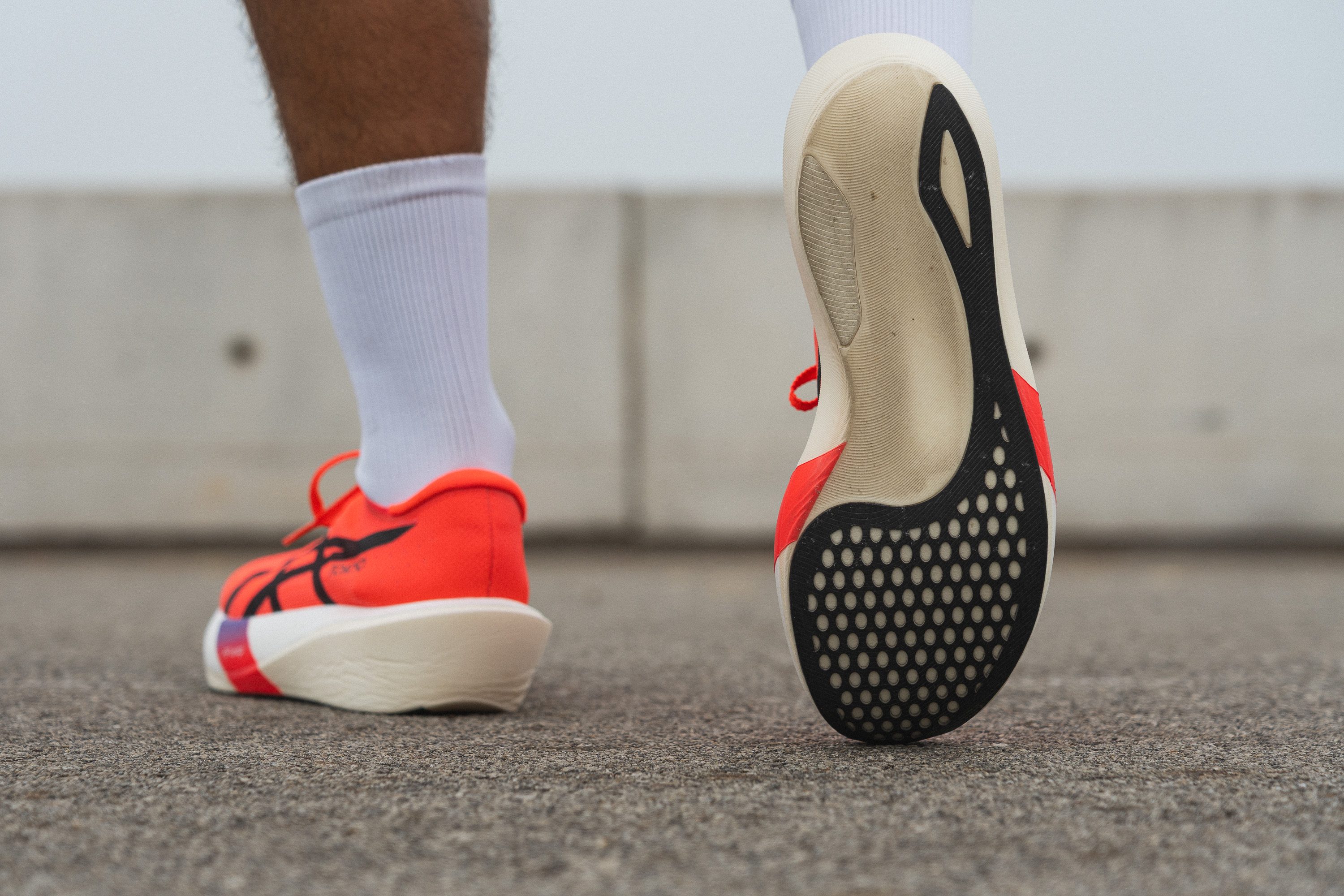
Flexibilidad / Rigidez
Una de las diferencias más claras entre las Metaspeed Edge Tokyo y las Sky Tokyo es la rigidez. En nuestras pruebas de laboratorio, descubrimos que las Sky (21,1 N) son un 33 % más rígidas gracias a su placa de carbono plana, que es más difícil de doblar que la placa curvada de las Edge, que obtuvieron una puntuación de 15,8 N.
Para los corredores que buscan una pisada más mullida, las Edge son un poquito más suaves. Y mira, gracias a este ejemplo, queda muy claro por qué las pruebas de laboratorio son tan importantes. Salimos a correr con ambos modelos y los sentimos en nuestros propios pies, pero utilizar números concretos hace que las comparaciones sean claras como el agua, dándonos una visión completa para tomar mejores decisiones.
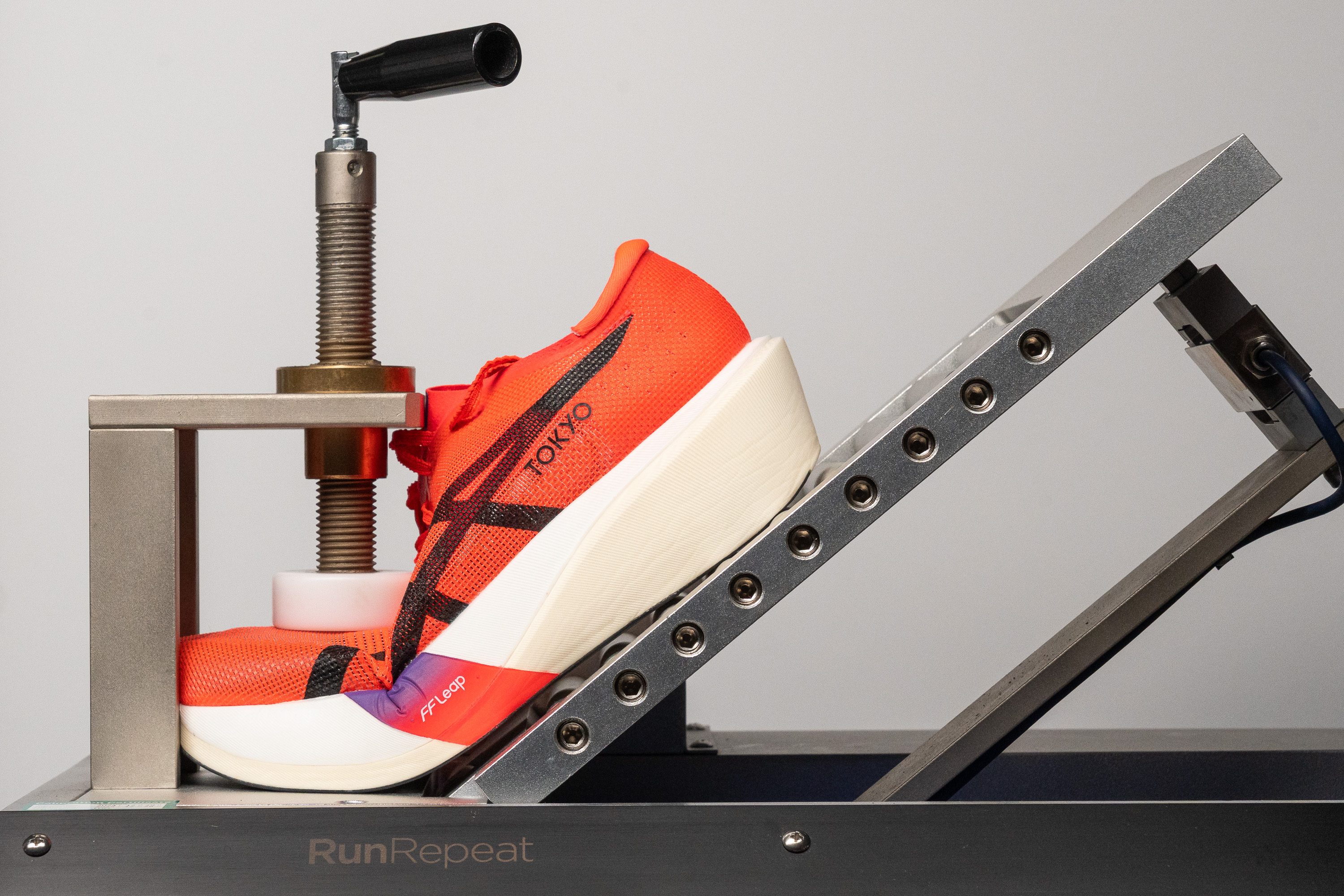
| Metaspeed Edge Tokyo | 15.8N |
| Media | 15.3N |
Peso
Las ASICS Metaspeed Sky Tokyo pesan 159 g, así que están entre las superzapatillas más ligeras que se han diseñado hasta ahora. De hecho, ¡hasta son un poco más ligeras que las Sky Tokyo! Que pesen menos que sus predecesoras se debe, principalmente, a que su antepié es más estrecho.
Lo que hace que este logro sea tan importante es el equilibrio entre su maravillosa ligereza y su altísima mediasuela (40 mm). Hace tres años, una combinación así habría sido impensable, pero mira, aquí está, en unas superzapatillas que cuestan prácticamente lo mismo que sus principales competidoras.
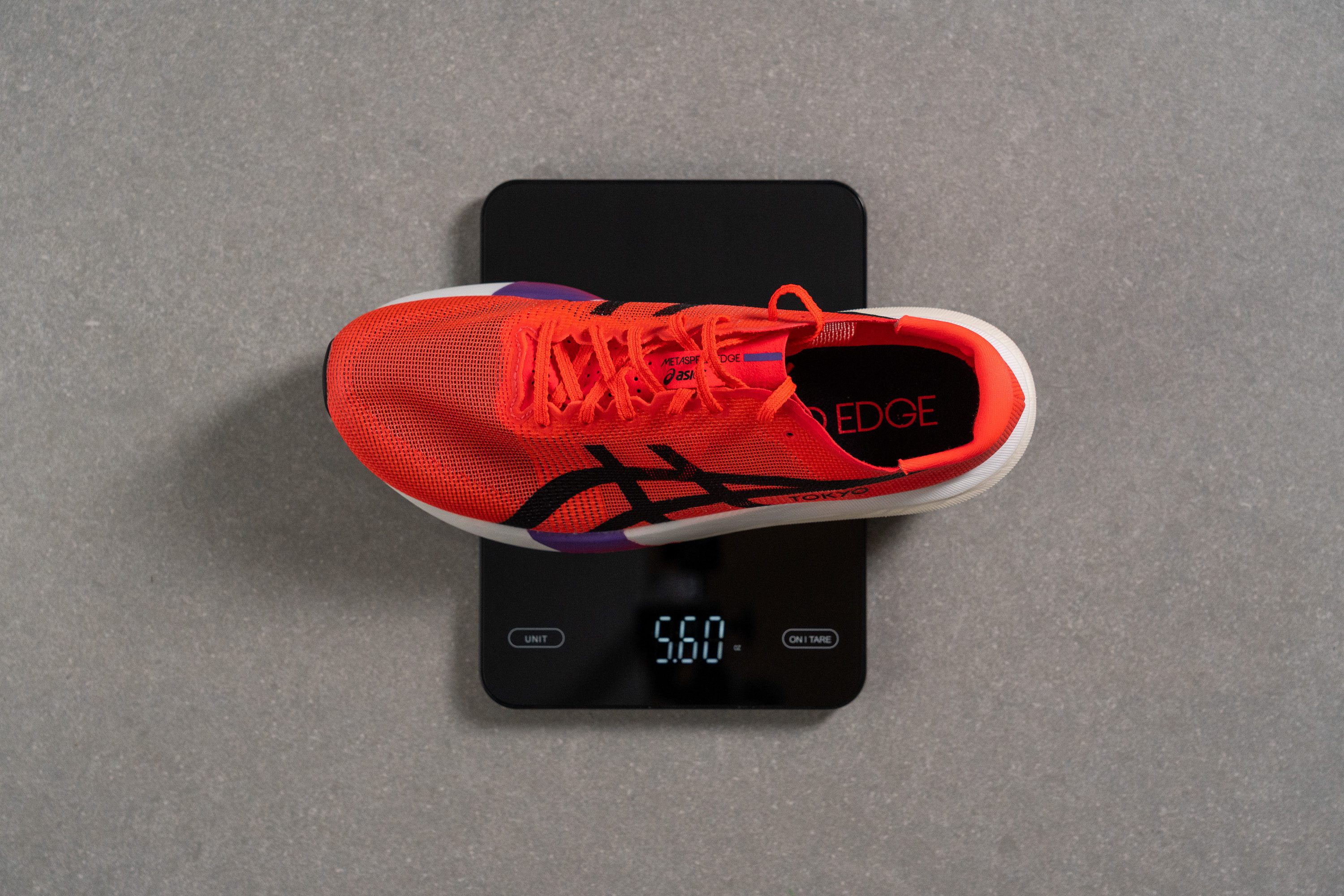
| Metaspeed Edge Tokyo | 5.6 oz (159g) |
| Media | 9.3 oz (264g) |
Transpirabilidad
Puede que el upper MOTIONWRAP 3.0 parezca una pequeña actualización con respecto a la versión 2.0, pero descubrimos que reduce un poco el peso y mejora bastante la ventilación de las zapatillas.
En nuestra prueba de humo, las Edge Tokyo rindieron estupendamente. Se llevaron un 5/5 perfecto, demostrándonos la eficacia con la que el upper gestiona el calor generado durante carreras de alta intensidad.
La estructura es muy finita, y ASICS ha añadido perforaciones no solo en la parte delantera del pie, sino también en la lengüeta y en el talón. Este diseño canaliza el flujo de aire desde múltiples ángulos, a diferencia de la mayoría de sus competidoras.
También vimos que ASICS incorporó estas características en la plantilla. Al ponerle agujeritos para el flujo de aire y reducir el material, la hizo más ligera y transpirable que la media.
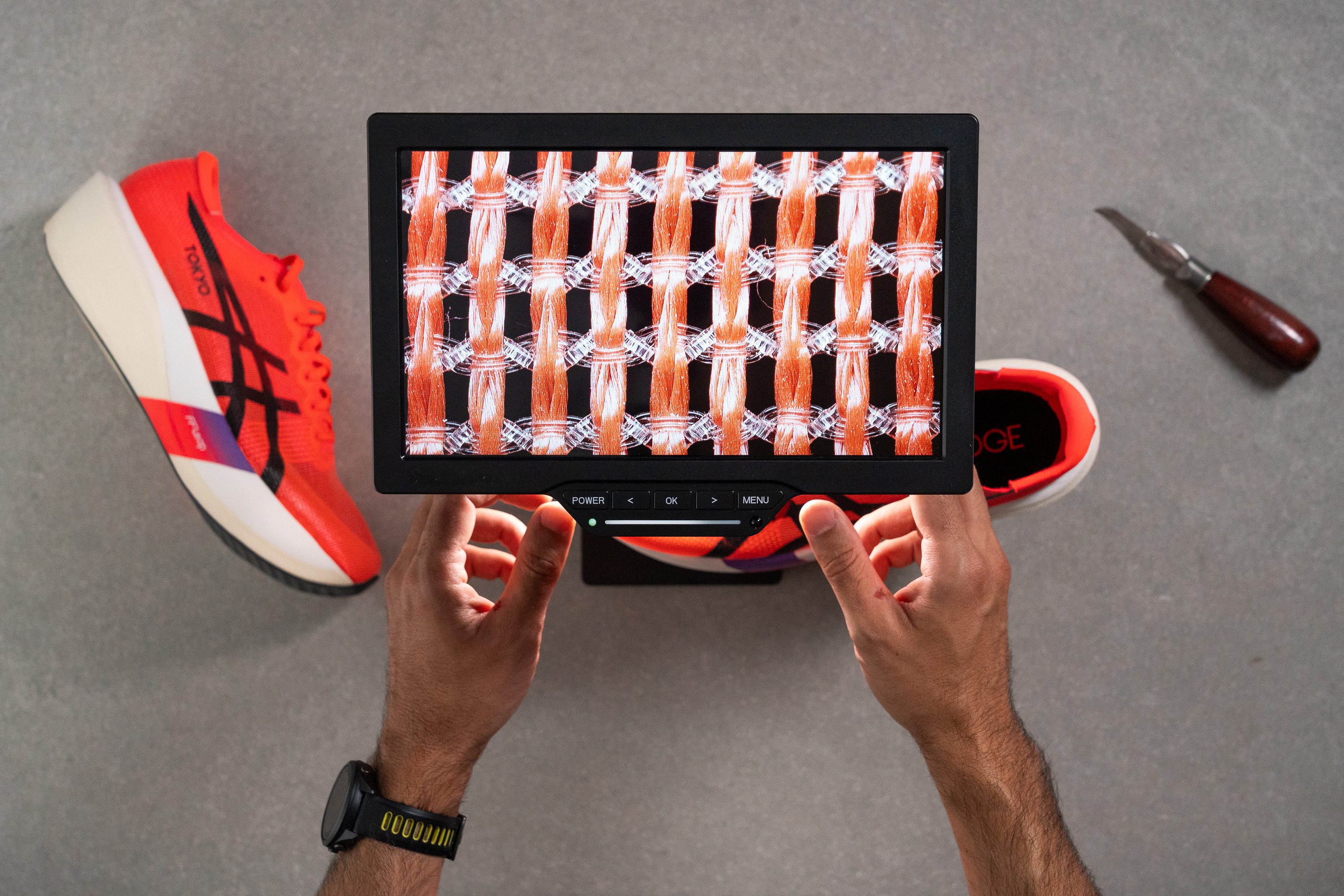
Visto bajo nuestro microscopio digital, la estructura parecía muy precisa, con espacios distribuidos de manera uniforme que equilibran la ventilación y la resistencia. Esta meticulosa atención al detalle hace que el precio de este modelo sea más fácil de justificar.
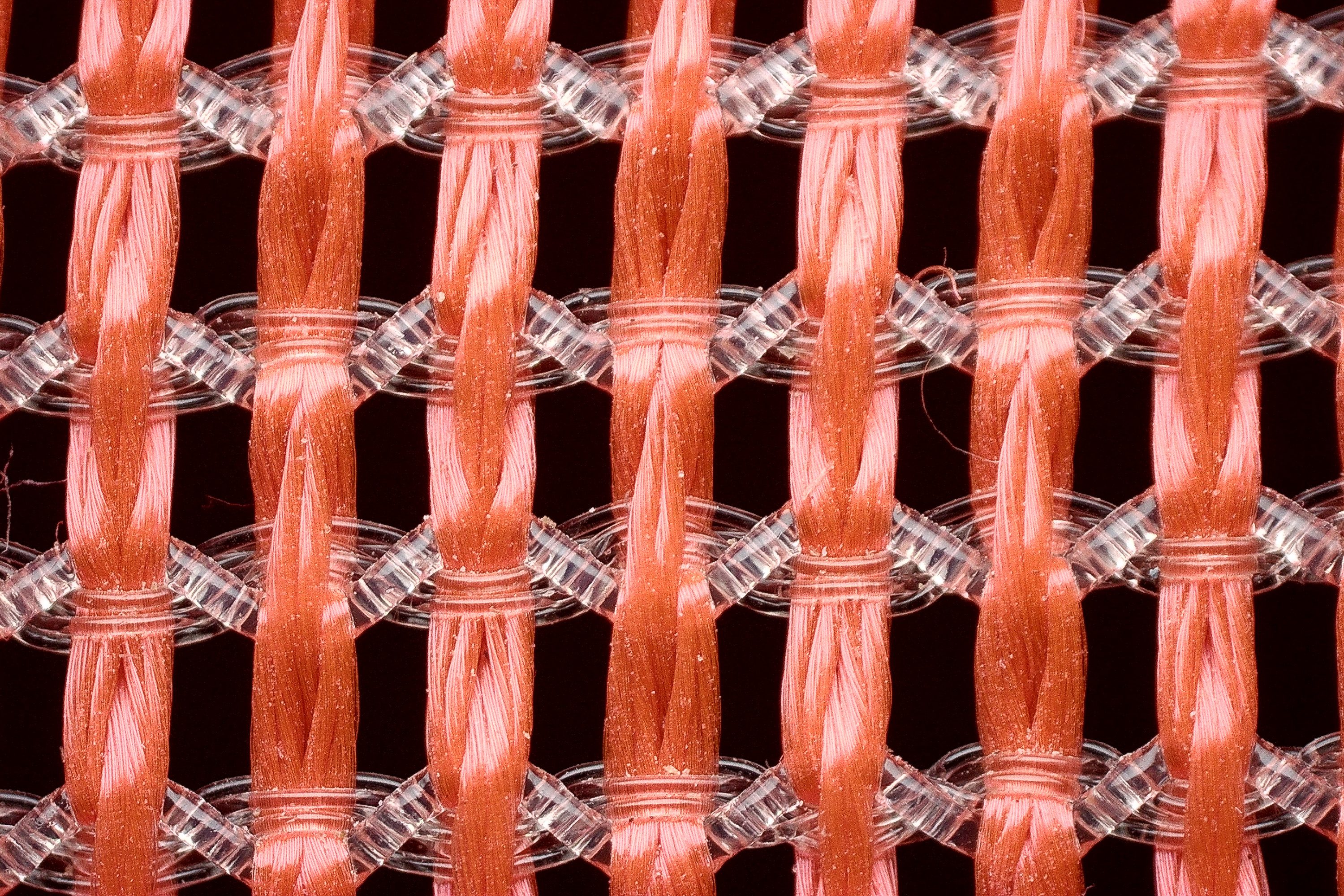
Por último, ASICS puso un poco de espuma en el talón para que estuviese más acolchado, cosa que está genial.
A diferencia de las zapatillas más ligeras, que sacrifican la comodidad en esta zona, este detalle tan bien pensado ofrece un ajuste más cómodo sin aumentar el peso.
| Metaspeed Edge Tokyo | 5 |
| Media | 3.7 |
Estabilidad
Prueba de estabilidad lateral
Creemos que las Edge Tokyo ofrecen una mejor estabilidad que las Sky Tokyo para los corredores que aterrizan con el talón, cosa que le deben, en gran parte, al mayor uso de espuma FF Turbo+ en esa zona, ya que es más rígida así que mejora la sujeción. El talón también tiene un nuevo diseño acampanado que es bastante distinto del de la versión Paris. Aunque puede que no se vea tan elegante o refinado desde atrás, es mucho más efectivo.
Por otro lado, creemos que la parte delantera más ancha y el diseño plano de la placa de las Sky probablemente les gusten más a los corredores de mediopié o de metatarsos, ya que nuestros datos de laboratorio y experiencia corriendo nos dicen que la plataforma es más estable en esa zona.
Rigidez torsional
La placa de carbono de las Edge Tokyo hace que sean un poquito menos rígidas que las Sky, aunque incluso así se llevaron un 5/5 perfecto en nuestra prueba manual de rigidez torsional.
| Metaspeed Edge Tokyo | 5 |
| Media | 3.5 |
Rigidez del contrafuerte del talón
La parte de atrás de estas zapatillas tiene una sujeción estructural mínima, y es que se llevaron solo un 1/5 en nuestra prueba. Este resultado es coherente con la mayoría de las superzapatillas, que no suelen tener un contrafuerte firme en el talón.
| Metaspeed Edge Tokyo | 1 |
| Media | 2.9 |
Anchura de la mediasuela - antepié
La parte delantera de las Edge ofrece un poco menos de estabilidad pero más agilidad, cosa que le debemos a su antepié estrecho, que mide solo 108,0 mm. En comparación, las Sky son más espaciosas, llevándose un resultado de 114,9 mm en esta misma prueba.
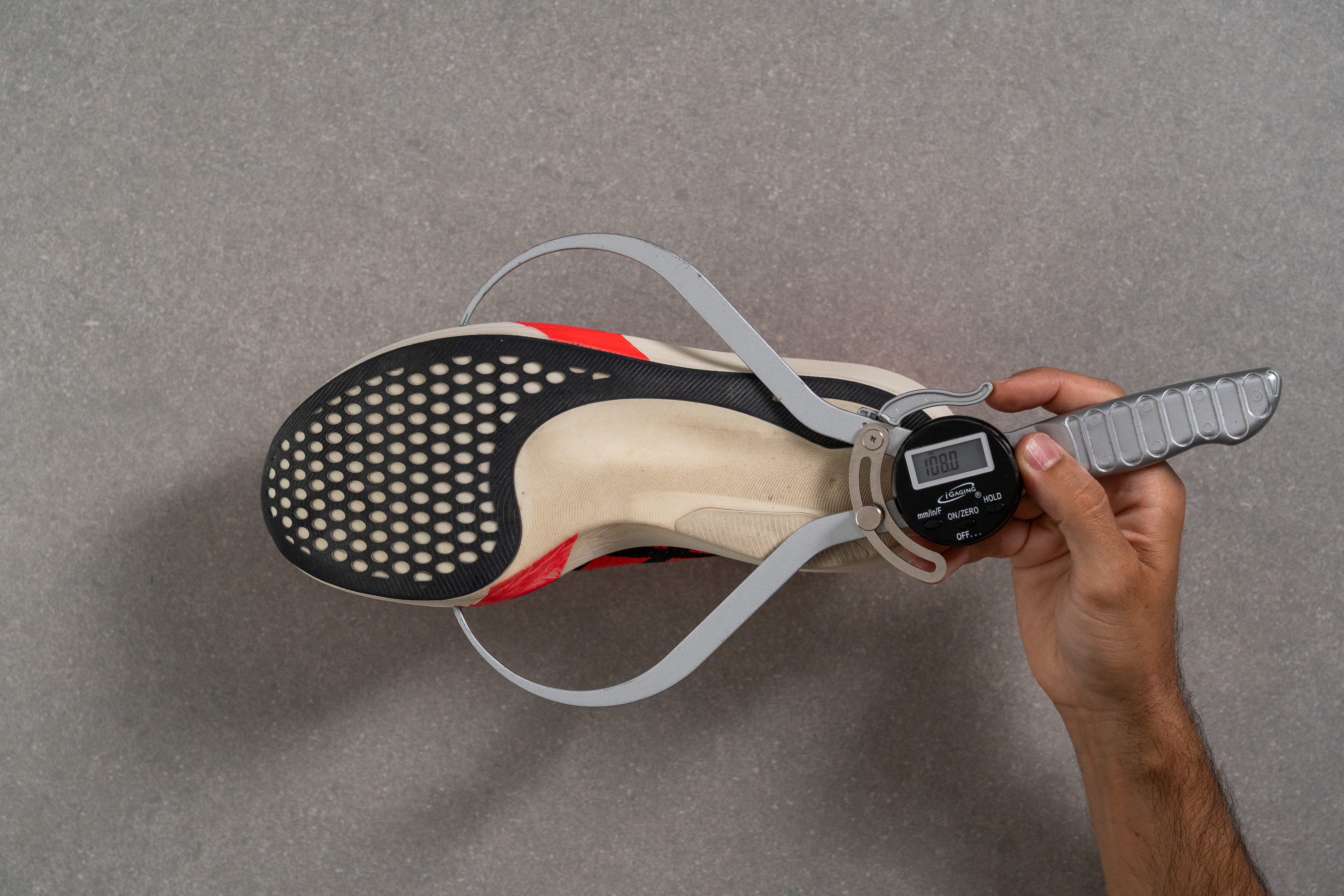
| Metaspeed Edge Tokyo | 108.0 mm |
| Media | 114.4 mm |
Anchura de la mediasuela - talón
ASICS les dio a las dos Metaspeed el mismo talón estrechito de 75,0 mm. En las Edge, un poquito más de anchura podría haber beneficiado a los corredores que aterrizan con el talón, pero en su lugar la marca optó por centrarse totalmente en el rendimiento y priorizar la reducción de peso.
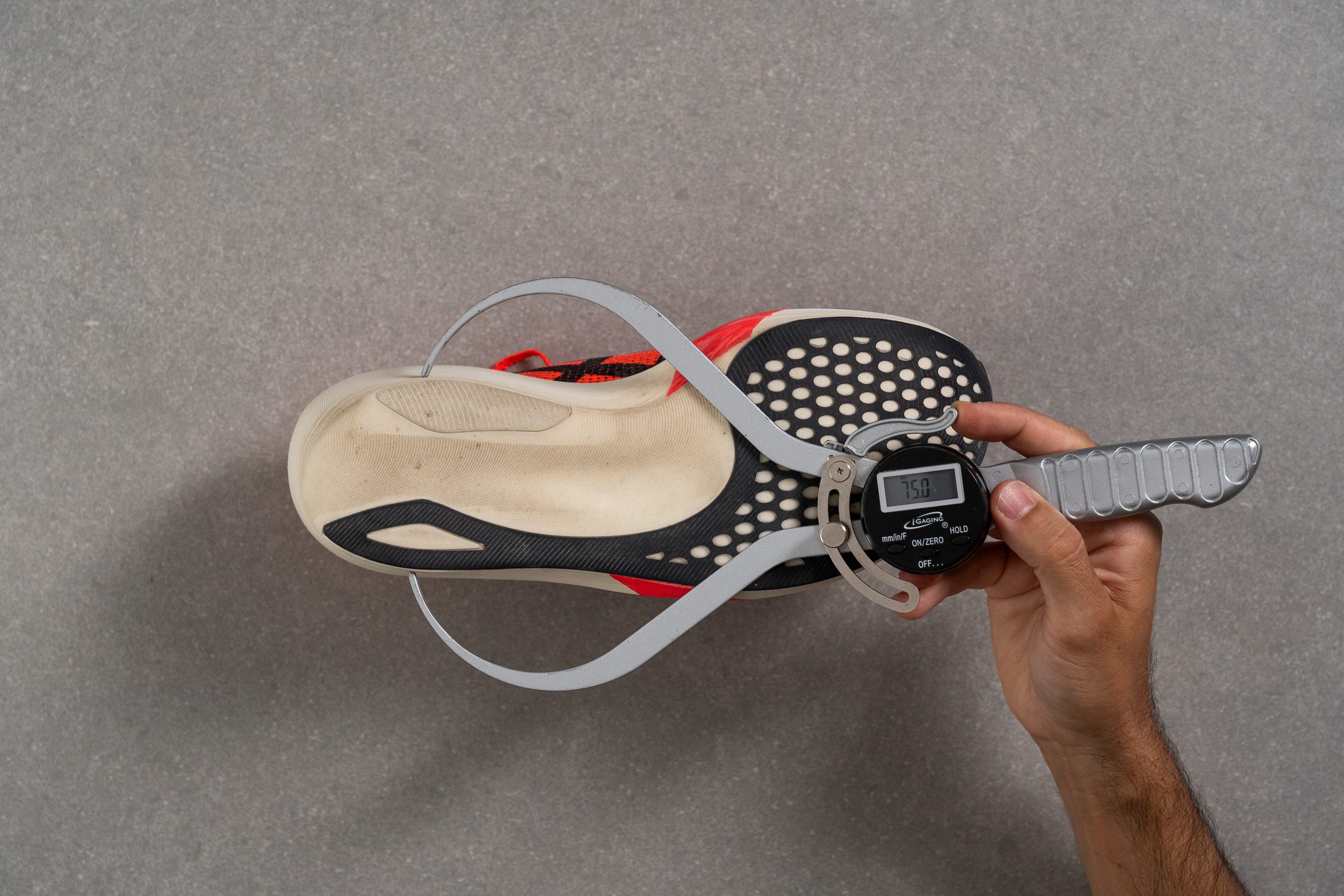
| Metaspeed Edge Tokyo | 75.0 mm |
| Media | 90.7 mm |
Durabilidad
Durabilidad de la parte delantera
Después de ver cómo el Dremel se comía con patatas el upper, les dimos a las Edge Tokyo un 1/5. Nada nuevo bajo el sol, y es que al final tienen una parte superior ligerísima. Aunque este resultado tiene todo el sentido del mundo, su rendimiento sigue siendo terrible.
| Metaspeed Edge Tokyo | 1 |
| Media | 2.6 |
Durabilidad del acolchado del talón
El acolchado del talón le da la vuelta a la tortilla llevándose un perfecto 5/5 en durabilidad. Esto hace que las zapatillas sean una buena opción para los triatletas, ya que se las pueden poner sin calcetines y no tener que preocuparse por un desgaste prematuro causado por la fricción.
| Metaspeed Edge Tokyo | 5 |
| Media | 3.4 |
Durabilidad de la suela
La suela exterior terminó con unos daños de solo 0,9 mm. El caucho negro ASICSGRIP también aguantó bien en nuestra prueba Dremel, demostrando que puede ofrecer, al menos, una vida útil decente.
| Metaspeed Edge Tokyo | 0.9 mm |
| Media | 1.1 mm |
Grosor de la suela
Con solo 1,4 mm de caucho, la suela exterior es muy finita, así que no está hecha para ser muy duradera. Pero... a ver, vamos a ser sinceros, ¿quién cambiaría su ligereza por unos gramos extra? Nosotros no.
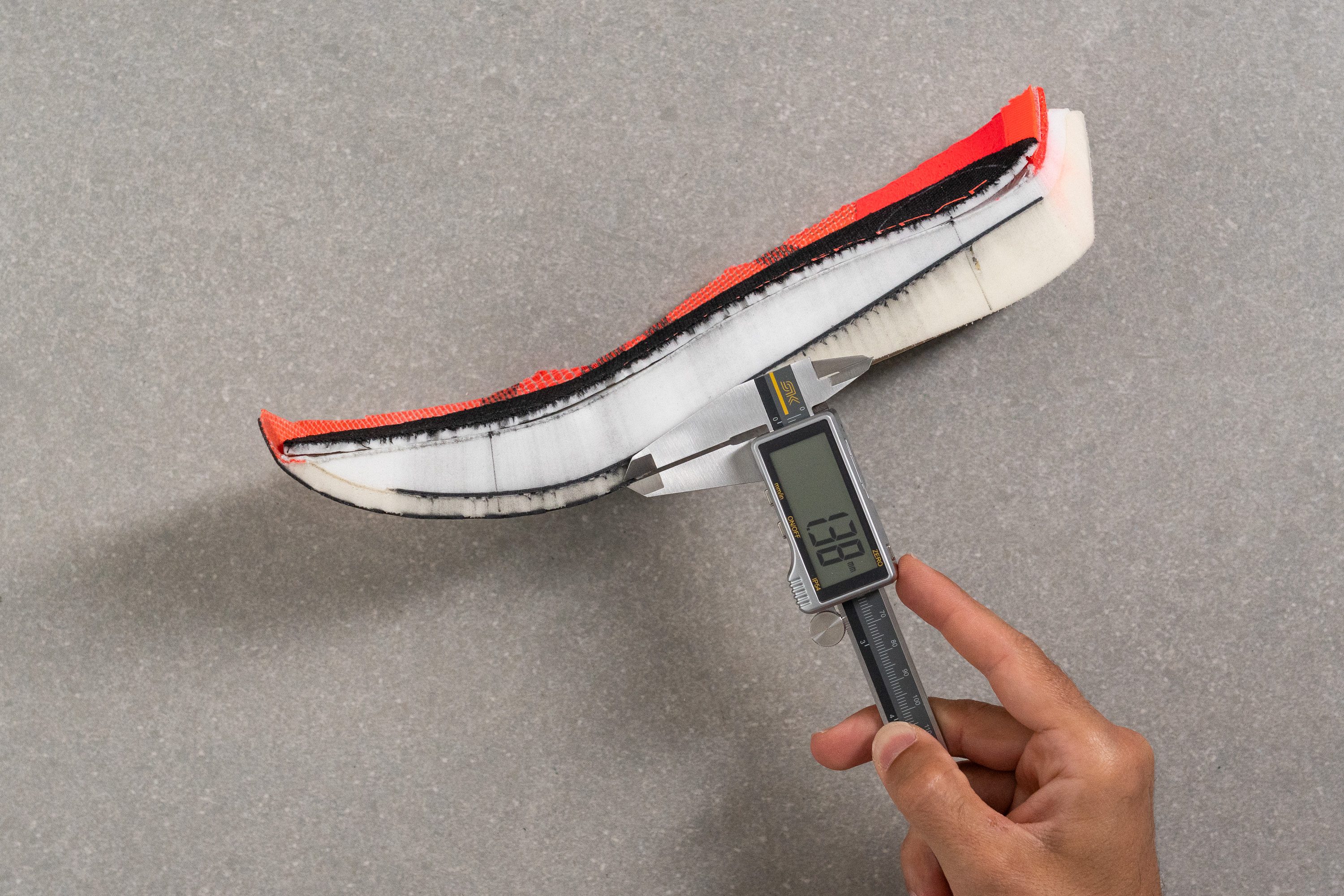
| Metaspeed Edge Tokyo | 1.4 mm |
| Media | 3.2 mm |
Varios
Grosor de la plantilla
Descubrimos que la plantilla refleja el espíritu competitivo de las zapatillas, ya que tiene un diseño finito de solo 3,4 mm.
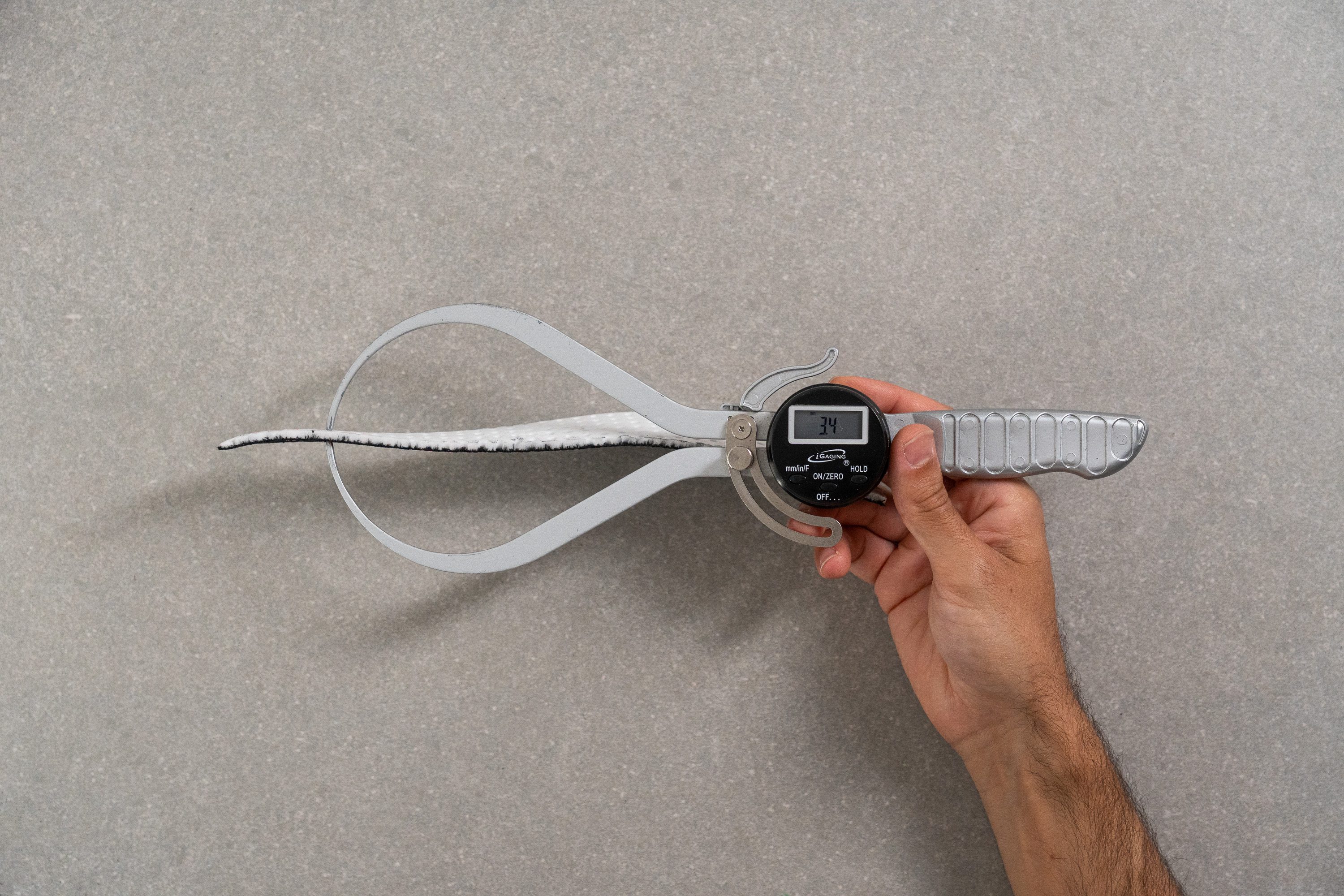
| Metaspeed Edge Tokyo | 3.4 mm |
| Media | 4.5 mm |
Plantilla extraíble
La plantilla de estas zapatillas es completamente extraíble, que es algo de lo que no pueden presumir todas las superzapatillas. Eso sí, si la cambias por una opción estándar de prácticamente cualquier otro modelo, lo más probable es que la parte delantera sea incluso más apretada.
Como alternativa, los corredores que necesiten más espacio pueden quitarles la plantilla. Esto hace que se ganen unos milímetros extra en la parte delantera del pie para conseguir un ajuste más holgado; sin embargo, es una medida arriesgada que puede causar ampollas o rozaduras, así que nuestra recomendación es que procedas con precaución, haciendo muchas pruebas antes de cualquier carrera.
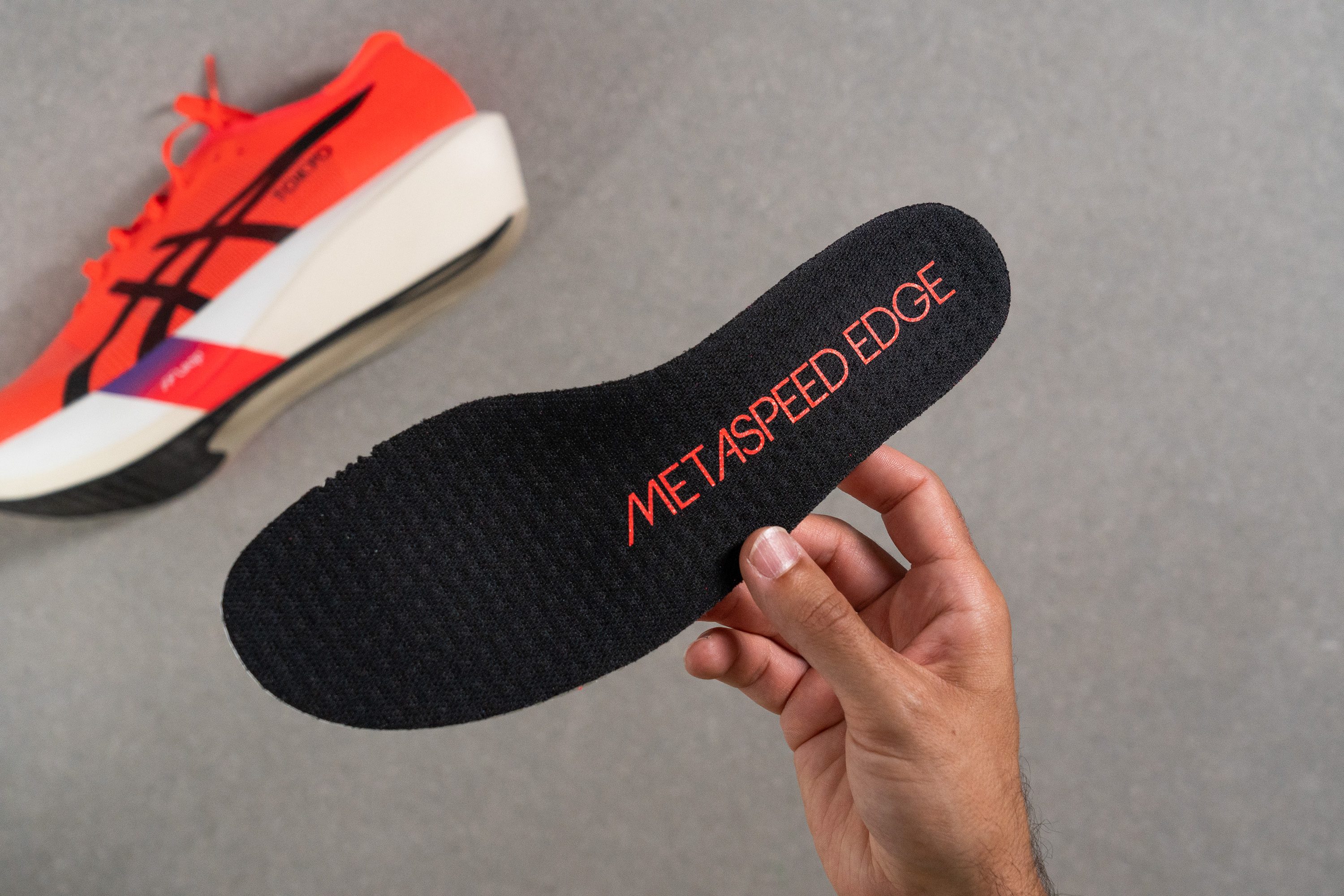
| Metaspeed Edge Tokyo | Sí |
Rigidez de la mediasuela en frío (%)
Cuando analizamos la espuma después de meter las Edge Tokyo en nuestro congelador durante 20 minutos, vimos que solo se había vuelto un 9 % más rígida. Esto nos deja clara una de las principales ventajas de un compuesto premium como el A-TPU, sobre todo si lo comparamos con una espuma estándar como puede ser la EVA.
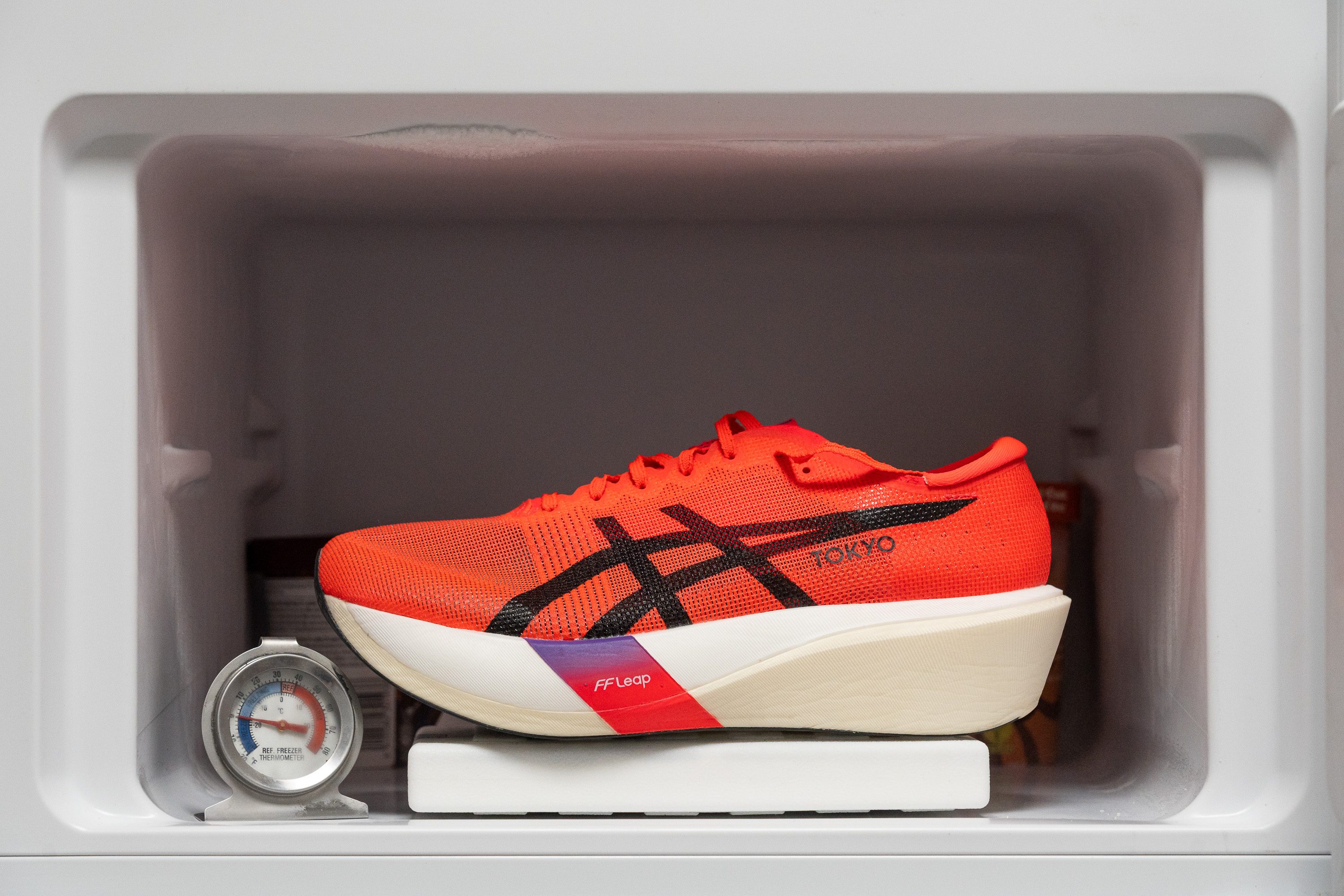
| Metaspeed Edge Tokyo | 9% |
| Media | 24% |
Elementos reflectantes
Las ASICS Metaspeed Edge Tokyo no tienen ningún elemento reflectante.
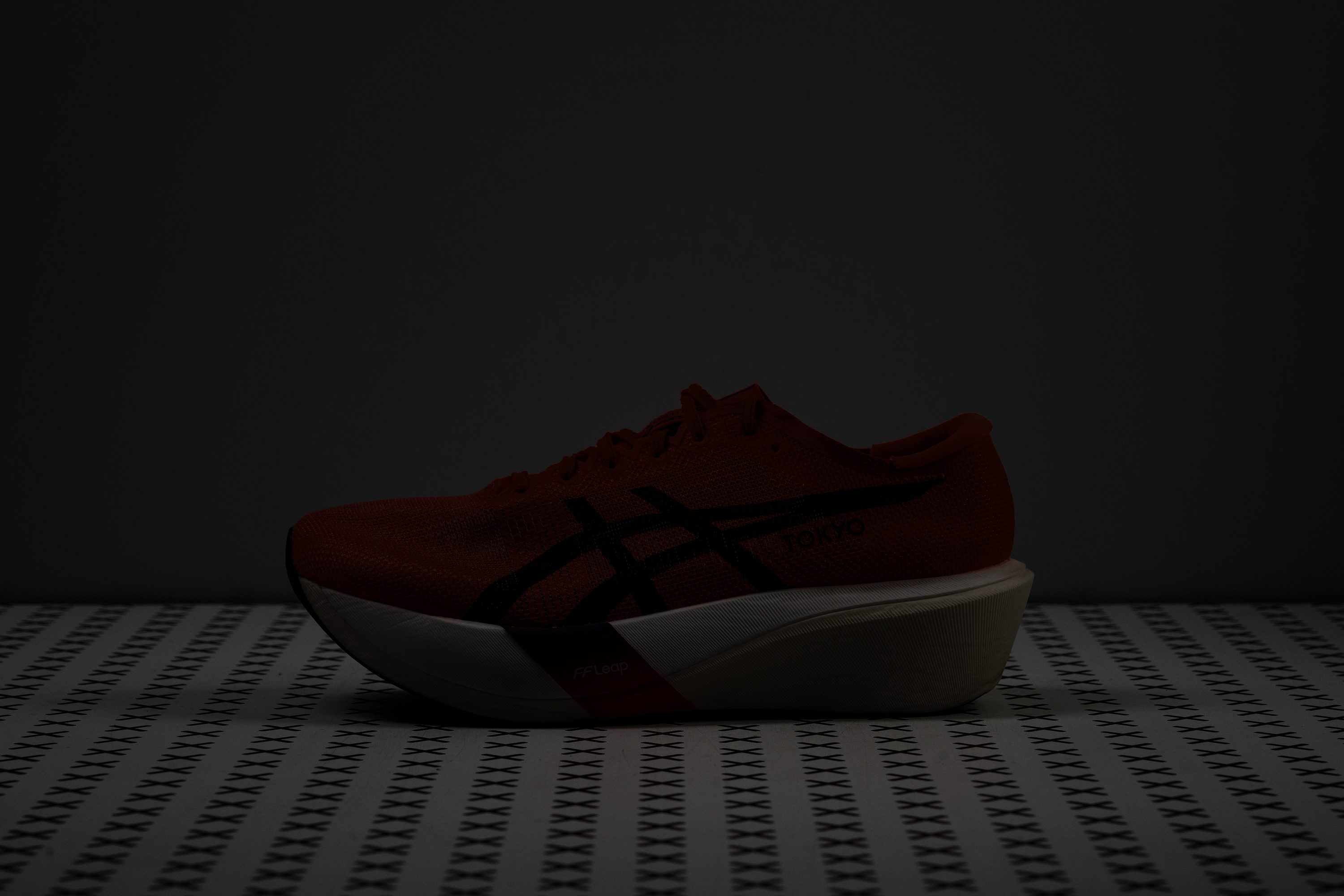
| Metaspeed Edge Tokyo | No |
Acolchado de la lengüeta
Descubrimos que las Metaspeed Edge Tokyo llevan la reducción de peso al extremo, con una lengüeta de solo 0,6 mm. Es una de las más finitas que hemos visto en nuestro laboratorio.
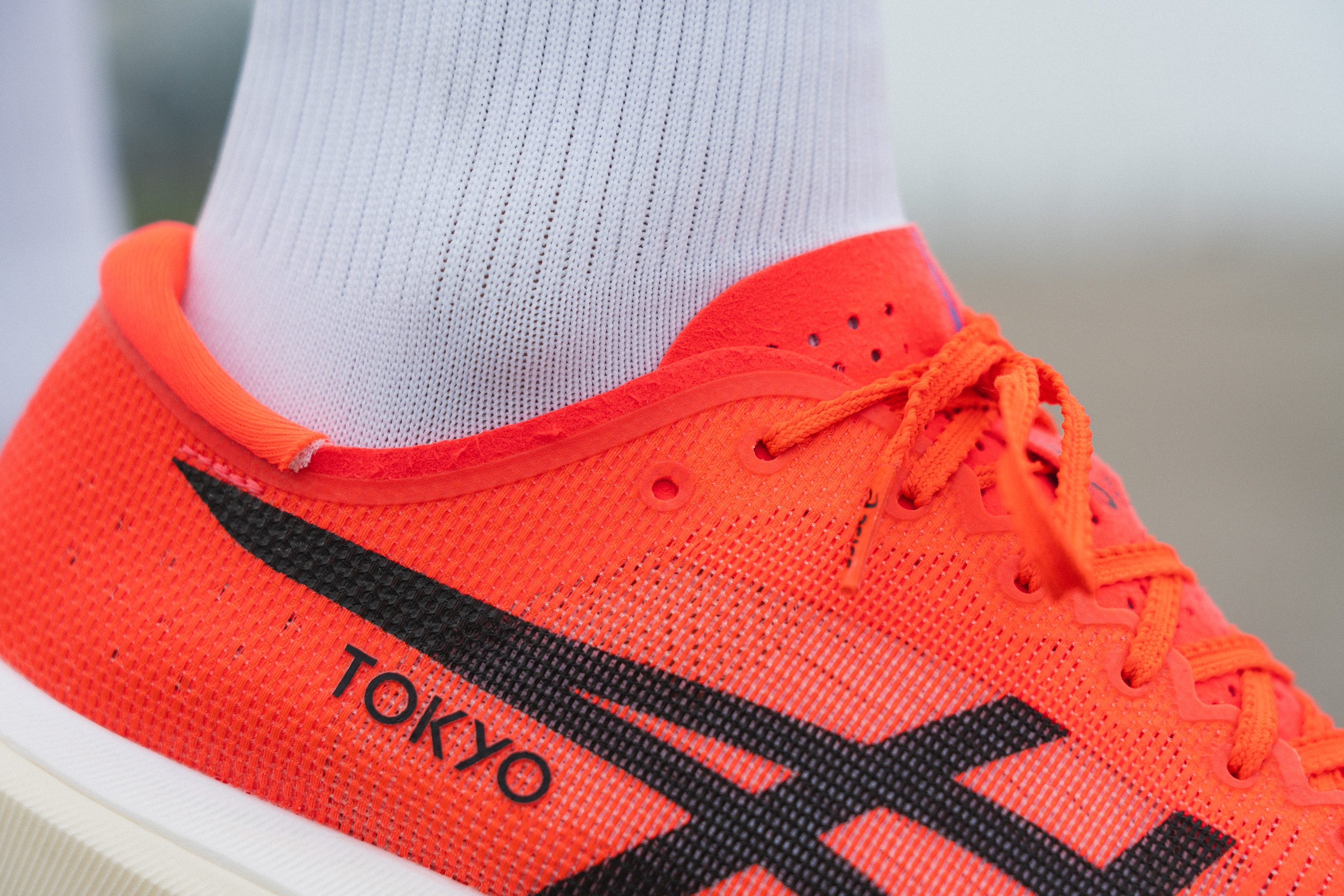
También descubrimos que las Metaspeed Edge Tokyo tienen un sistema de cordones tradicional con ojales distribuidos de manera uniforme. Sus cordones al estilo Vaporfly no se nos desataron mientras corríamos, y van de la mano con el precio alto de las zapatillas.
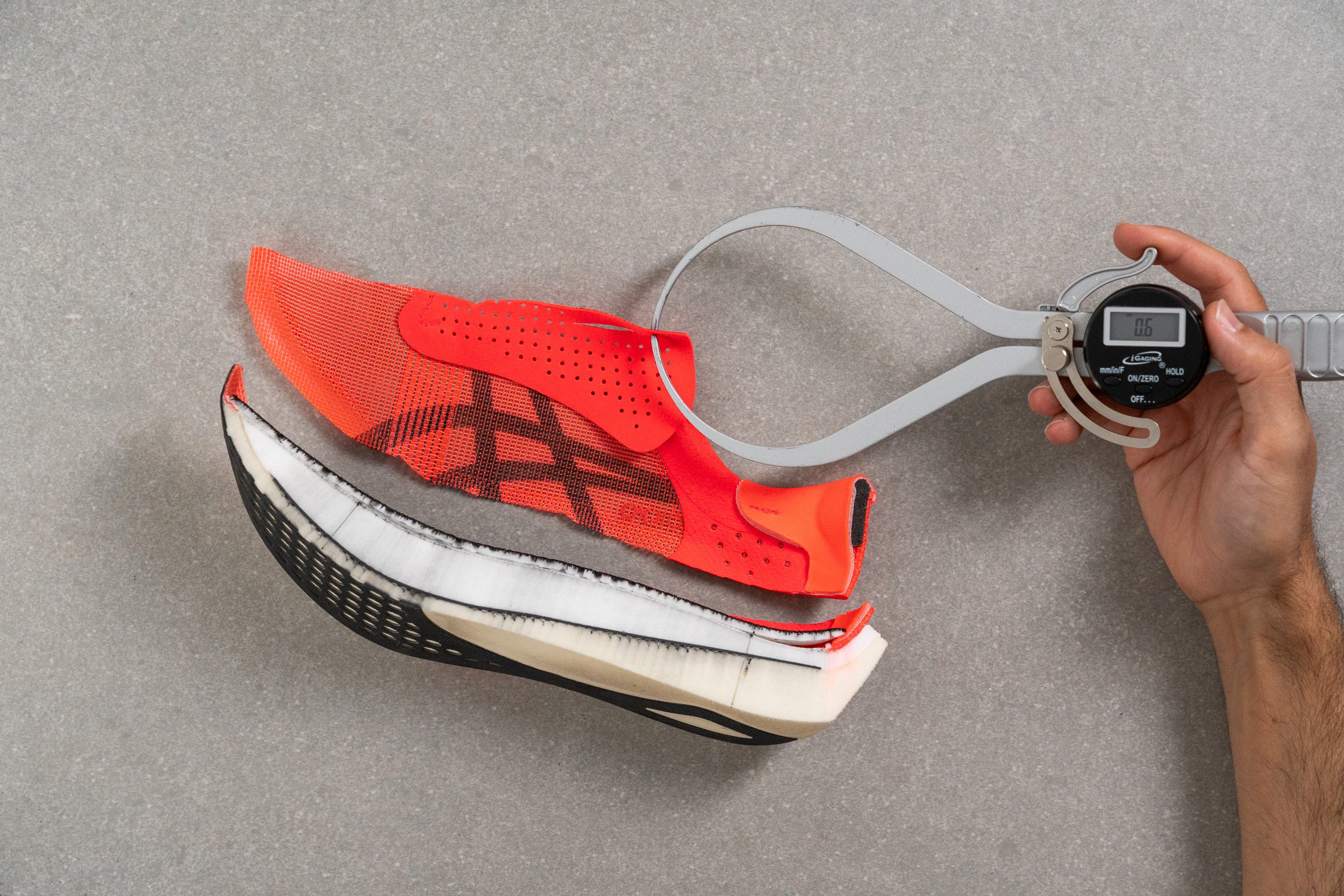
| Metaspeed Edge Tokyo | 0.6 mm |
| Media | 5.8 mm |
Lengüeta: tipo de refuerzo
En este modelo, la lengüeta no está reforzada, lo que puede preocupar a los corredores a los que no les gusta tener que lidiar con una lengüeta que a lo mejor baila un poco.
Si no te la quieres jugar, a lo mejor prefieres unas superzapatillas con un diseño tipo calcetín, como las Saucony Endorphin Elite 2, que ofrecen un ajuste mucho más seguro.
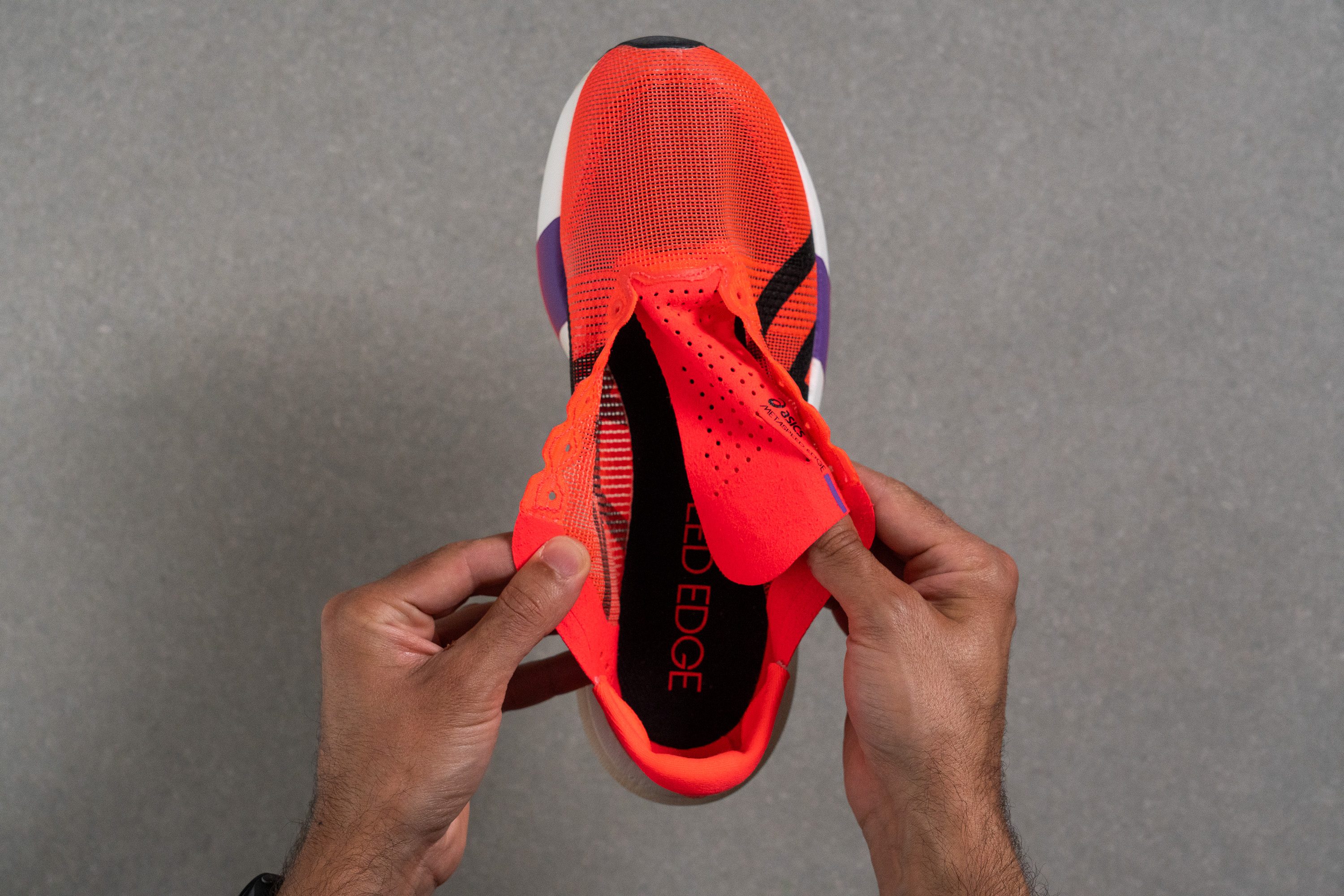
| Metaspeed Edge Tokyo | Ninguno |
Precio
Las Sky Paris son más caras que las Edge, y no, a nosotros tampoco nos hizo ninguna gracia. Pero claro, el uso de la espuma FF Leap, la mejora en el retorno de energía y las ventajas de una estructura más ligera justifican, en nuestra opinión, este coste extra.
| Metaspeed Edge Tokyo | $270 |
Tirador del talón
ASICS optó por un enfoque minimalista en el talón, eliminando el tirador para reducir el peso y utilizando menos materiales para mantener el diseño lo más ligero posible.
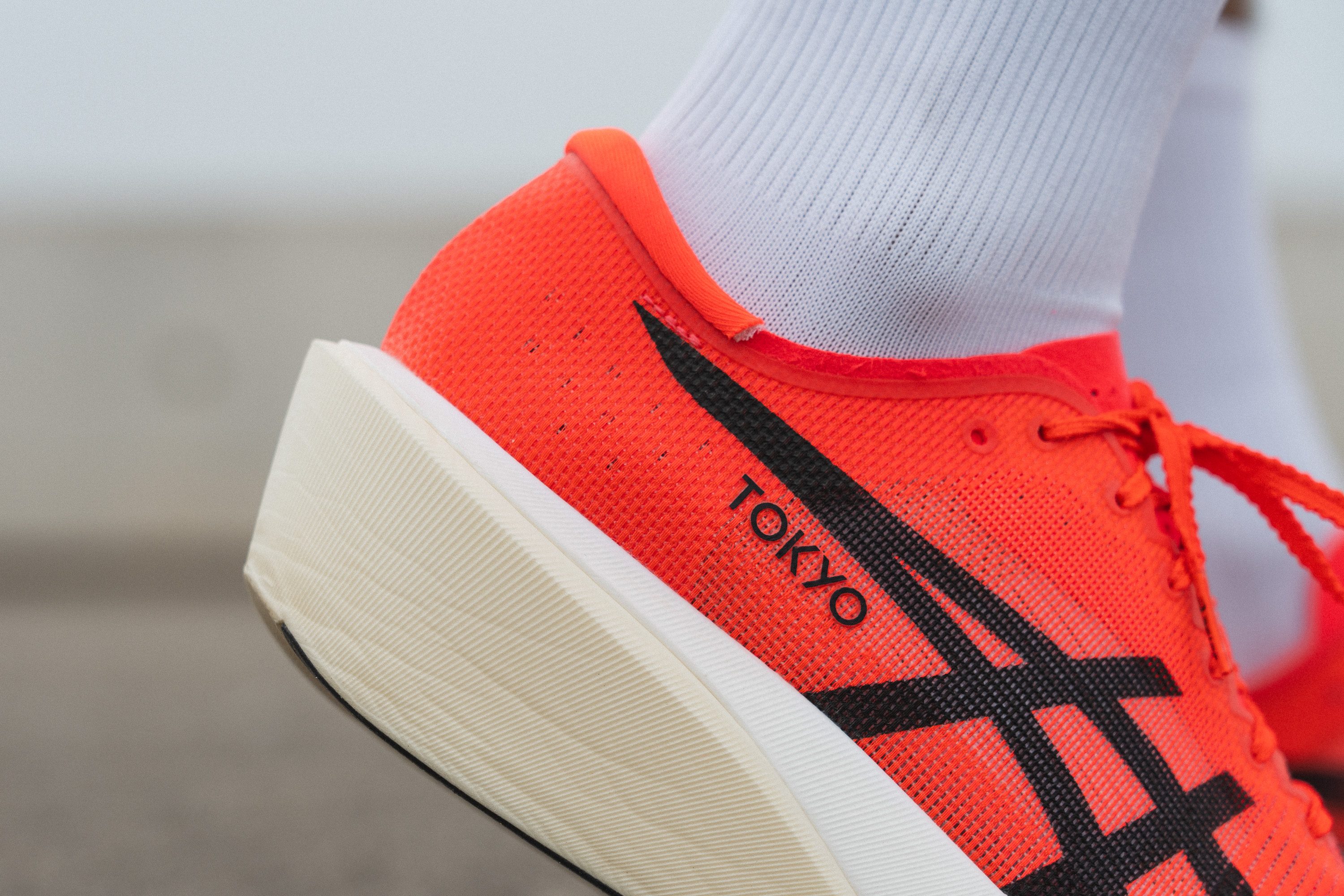
| Metaspeed Edge Tokyo | Ninguno |

